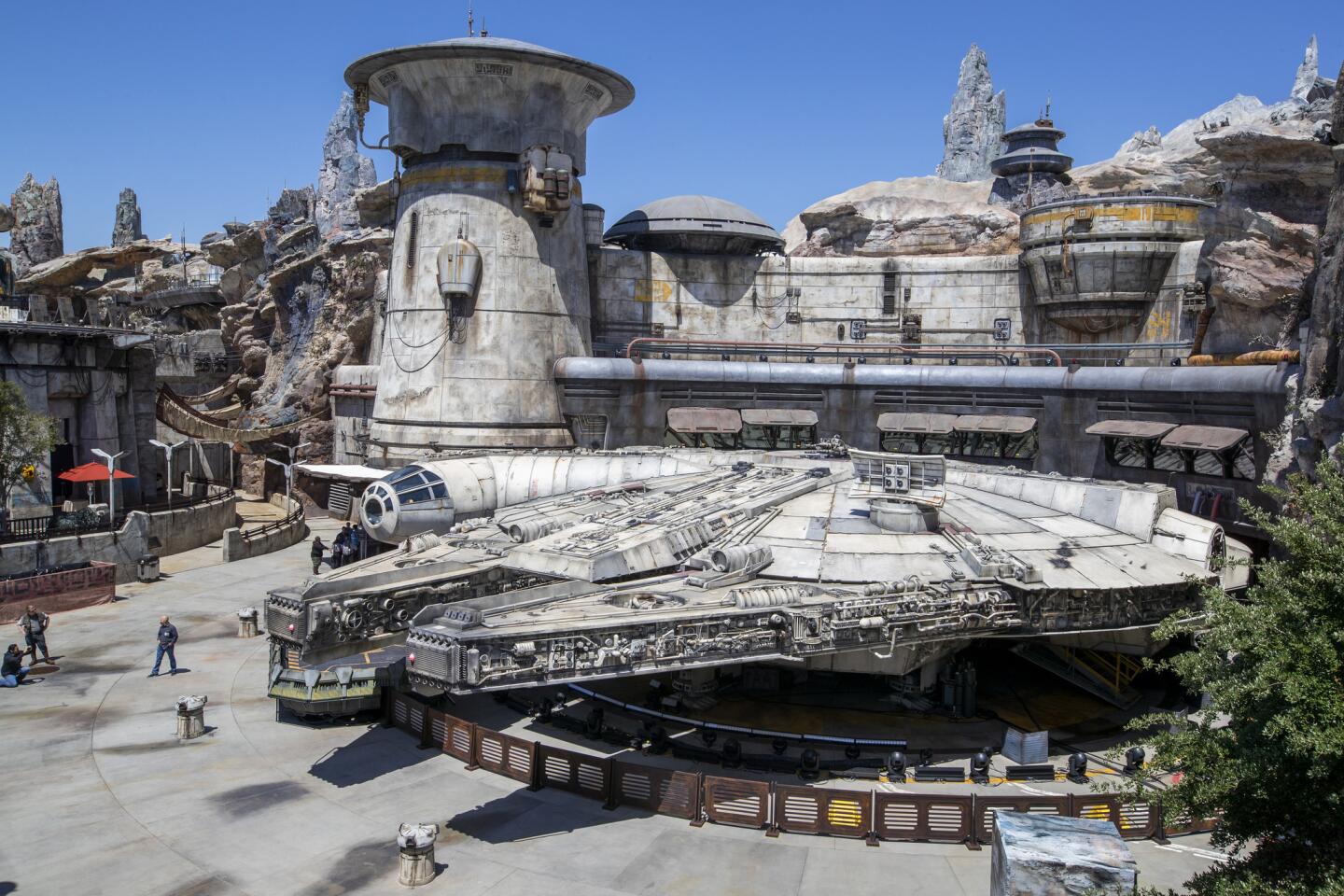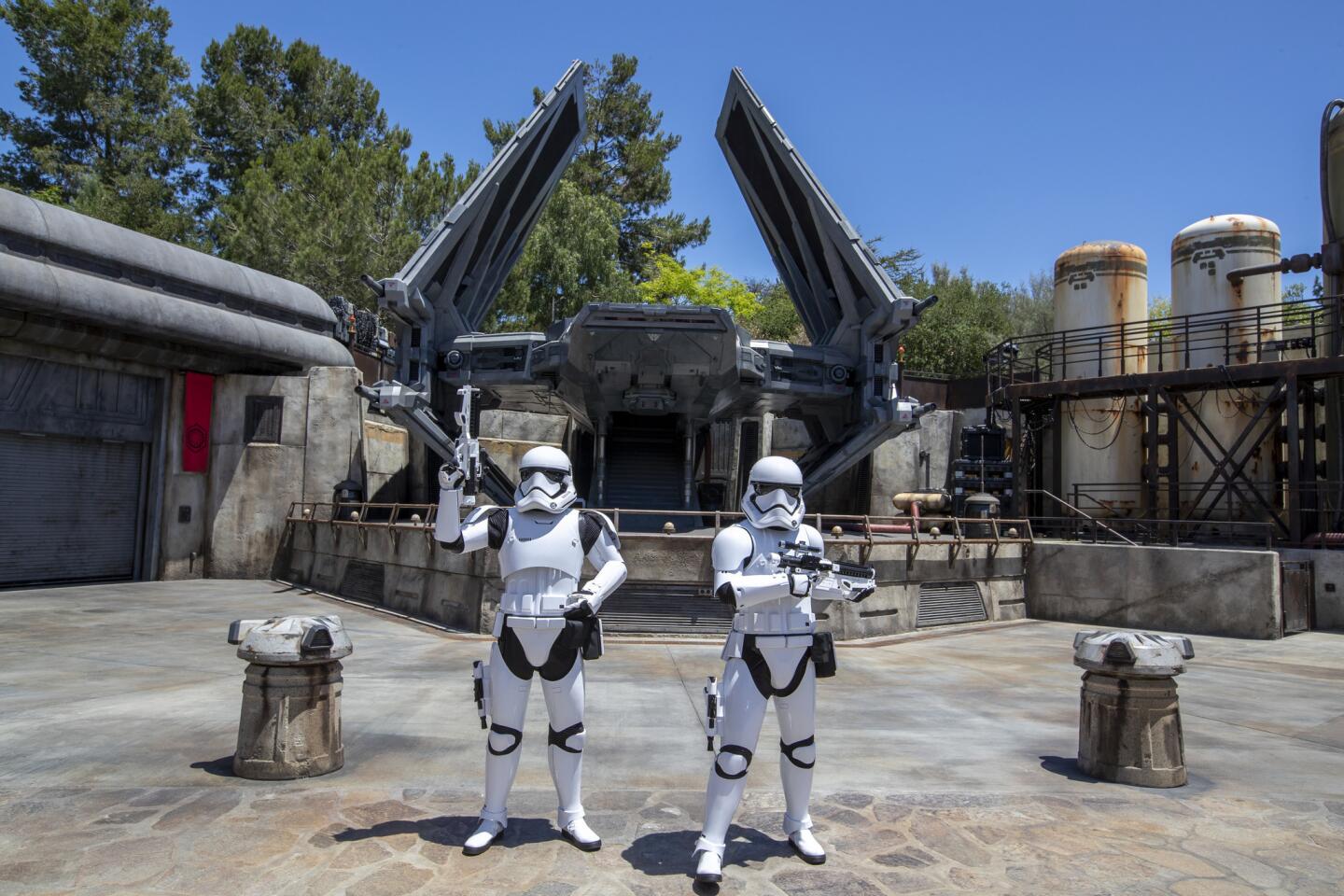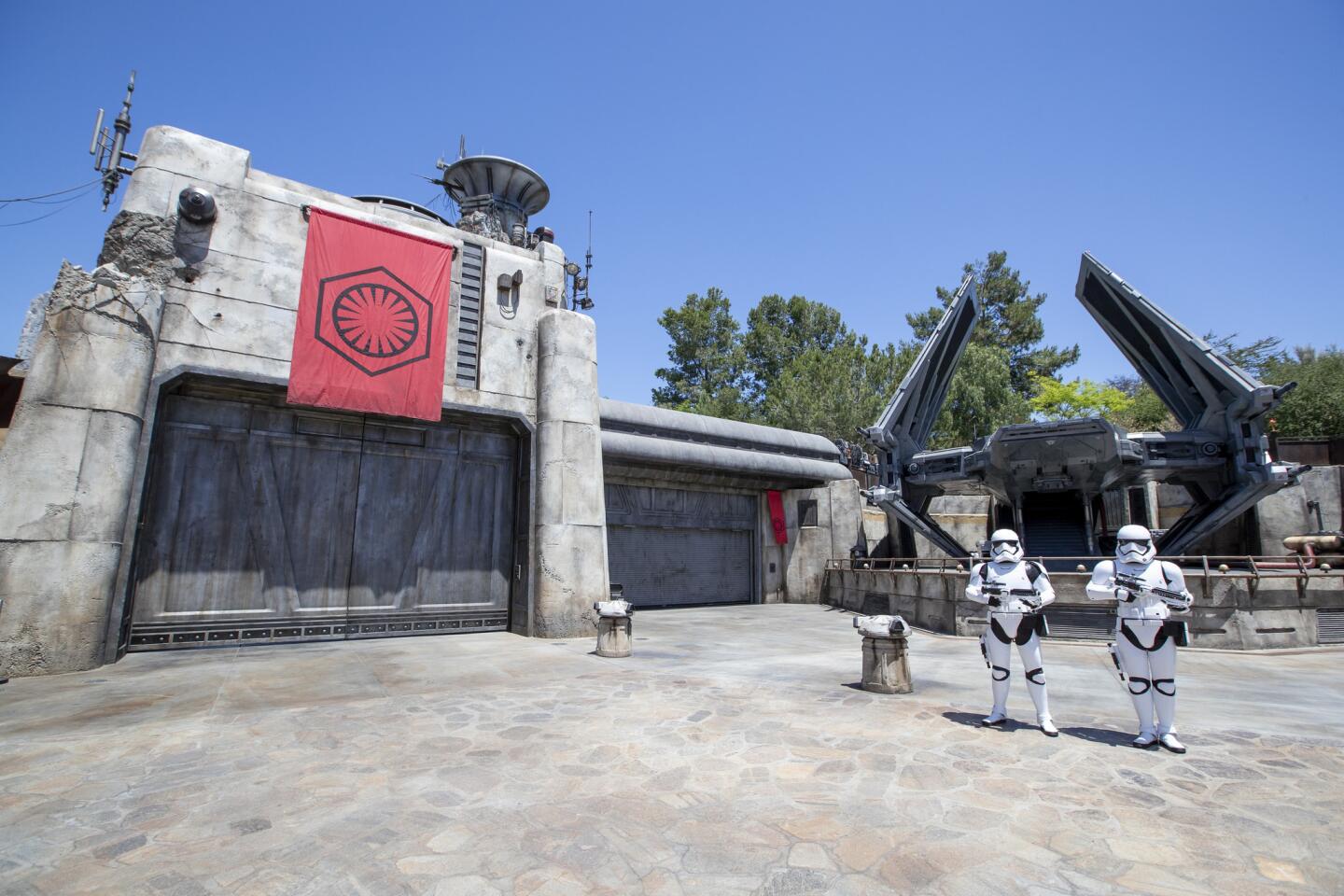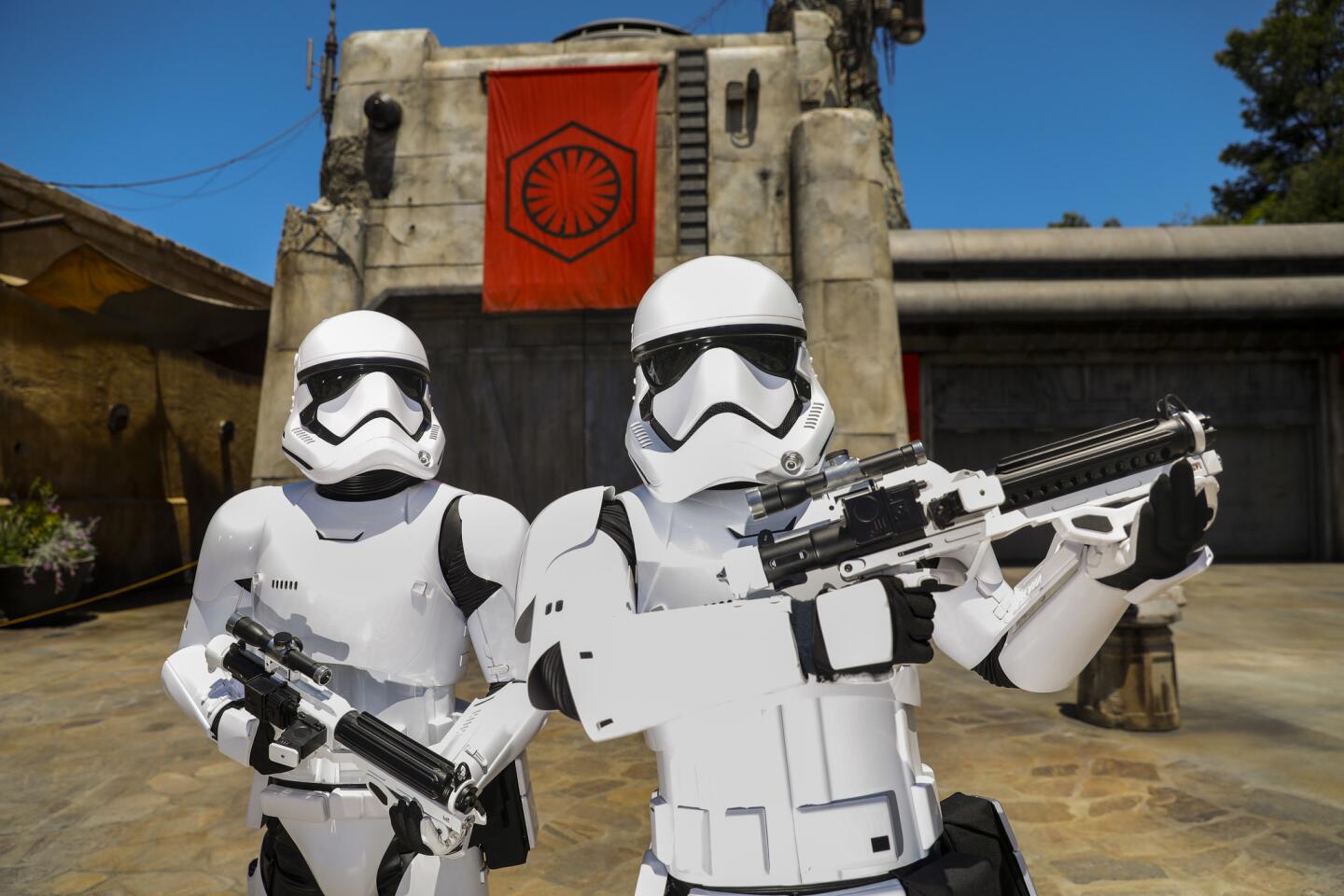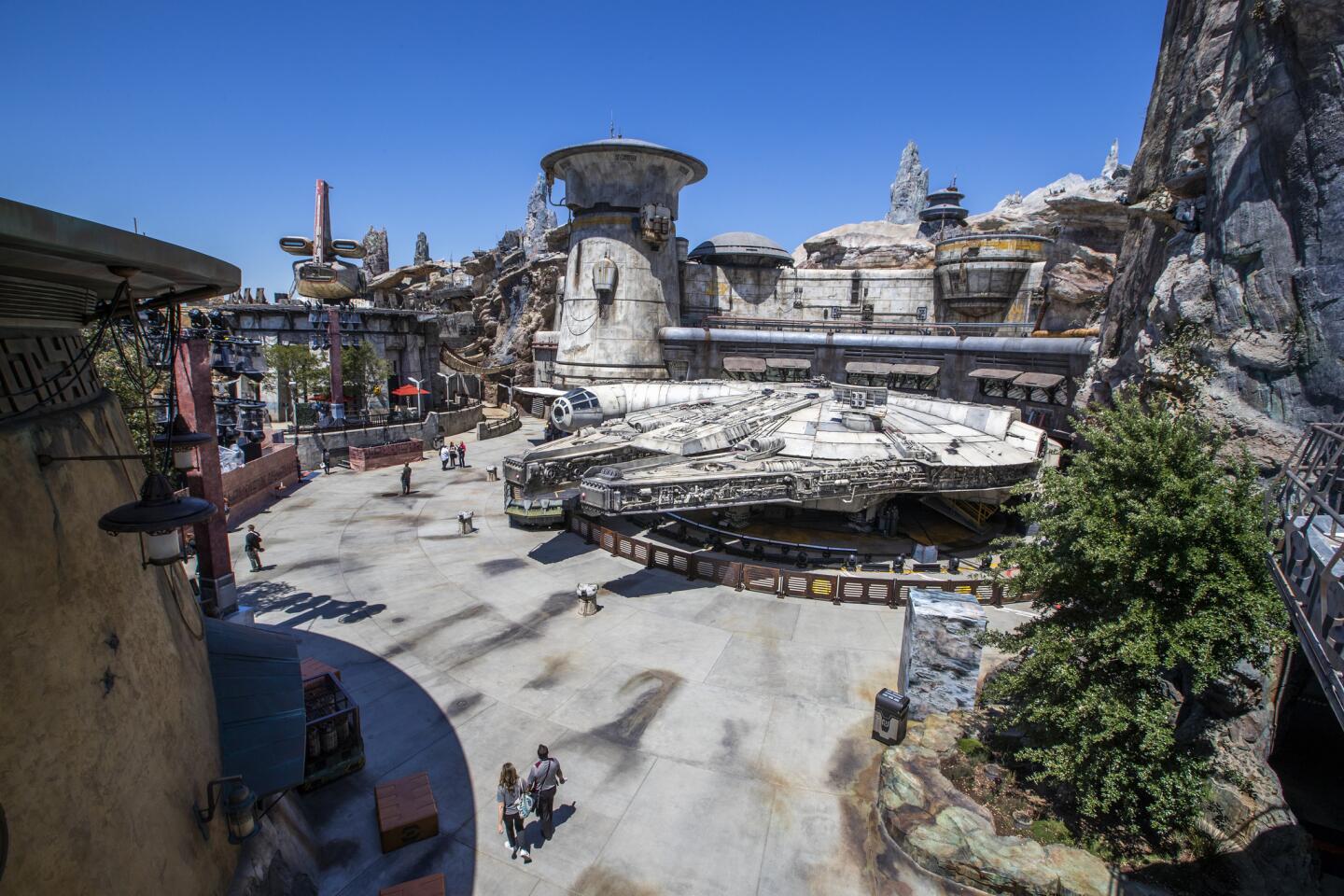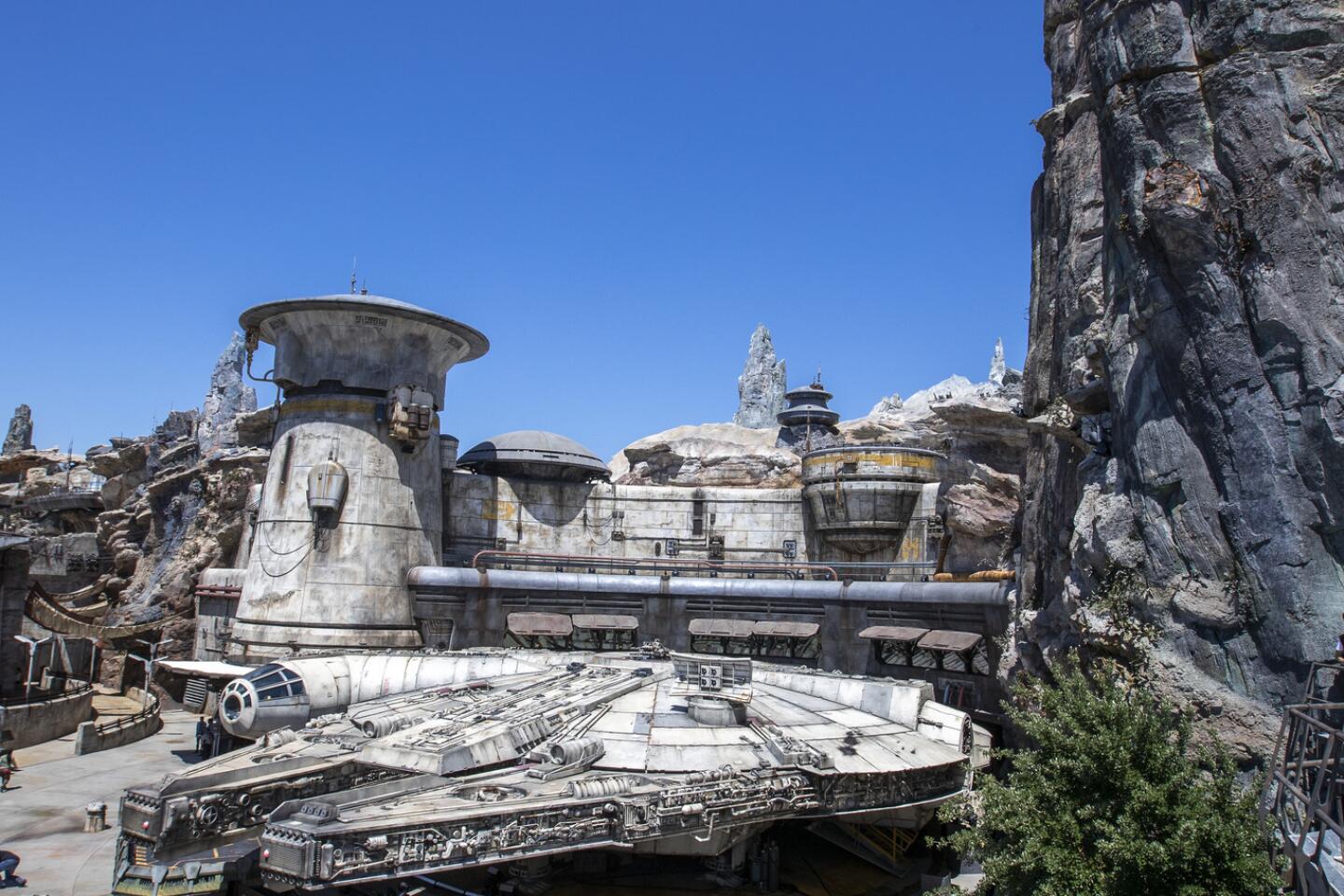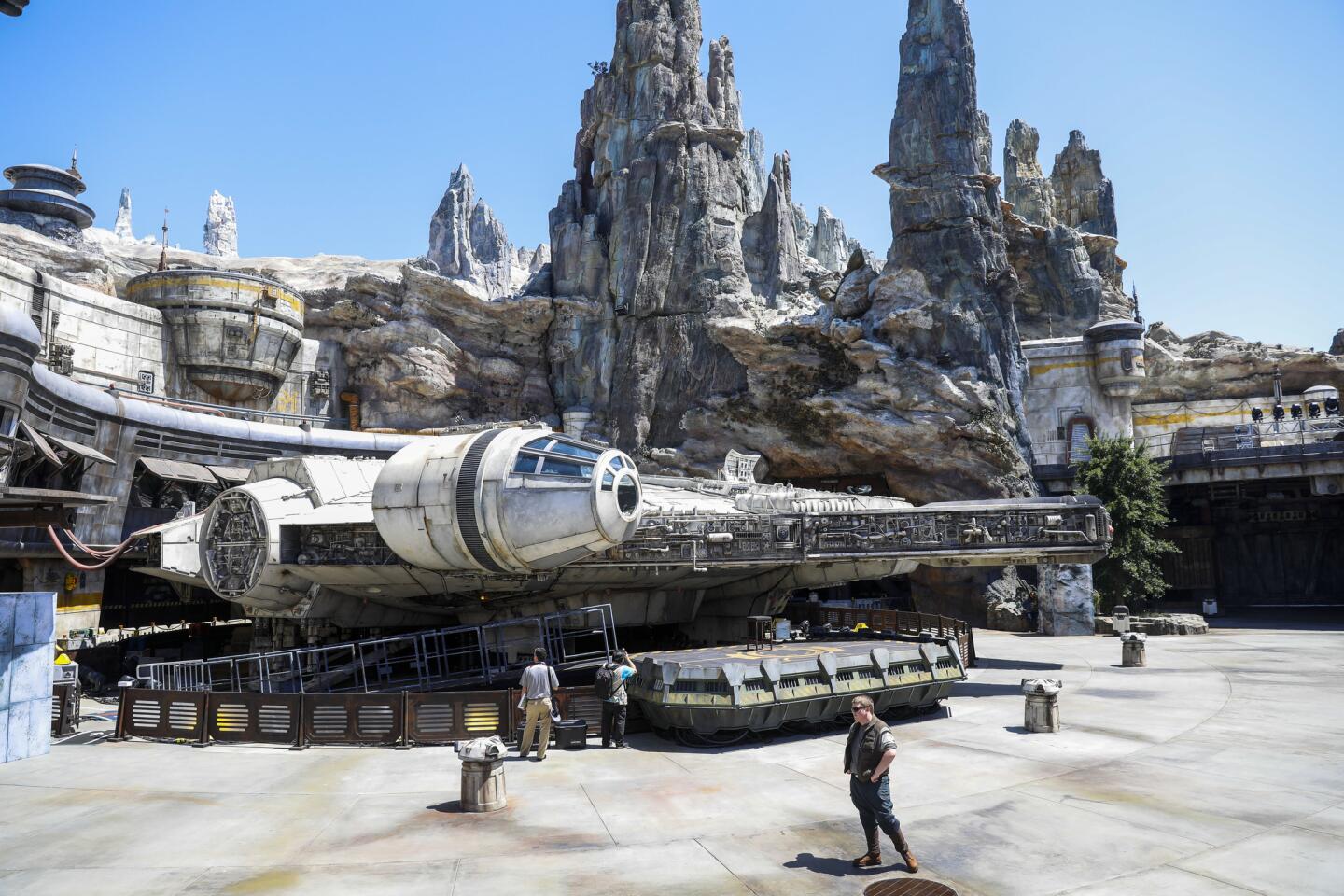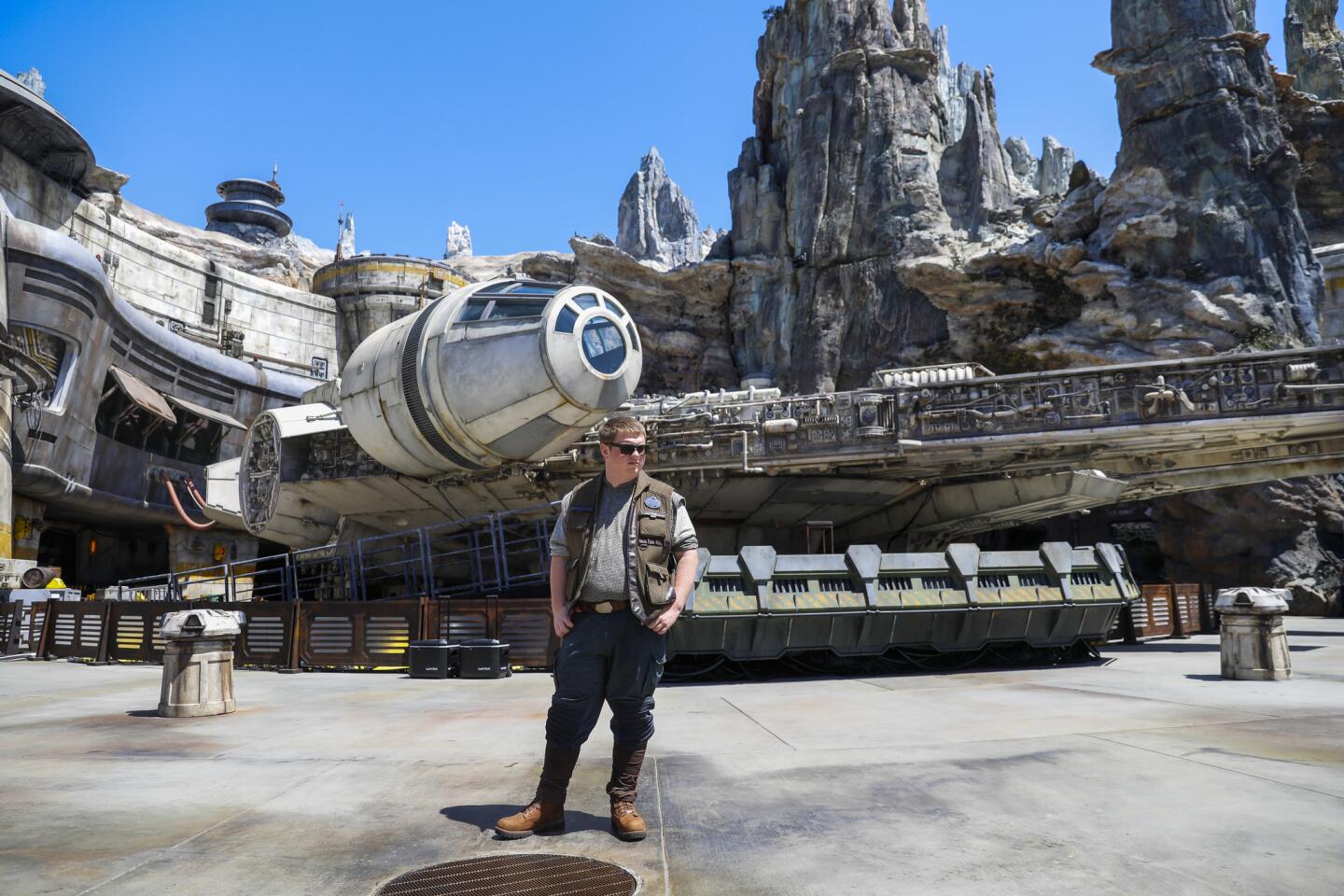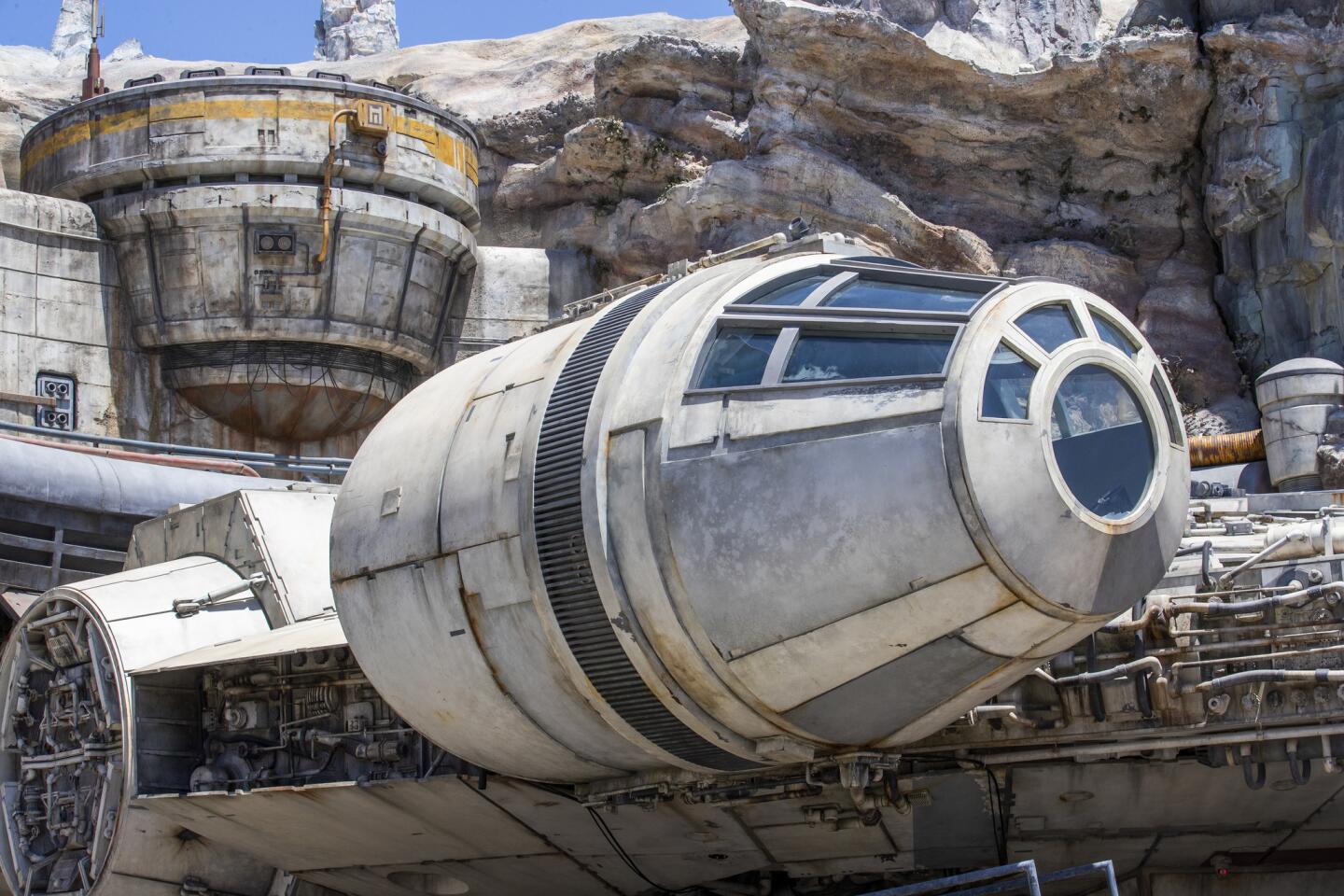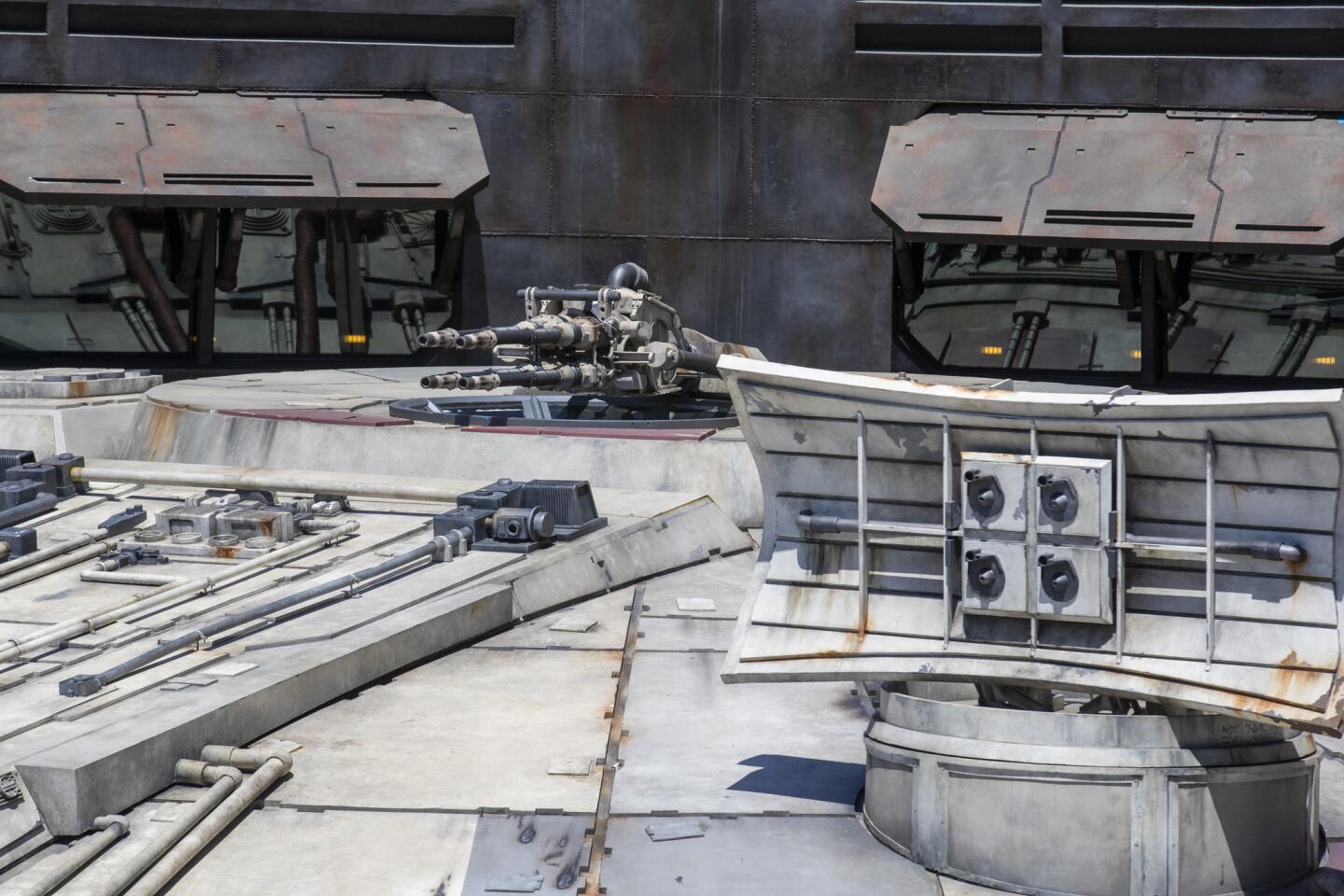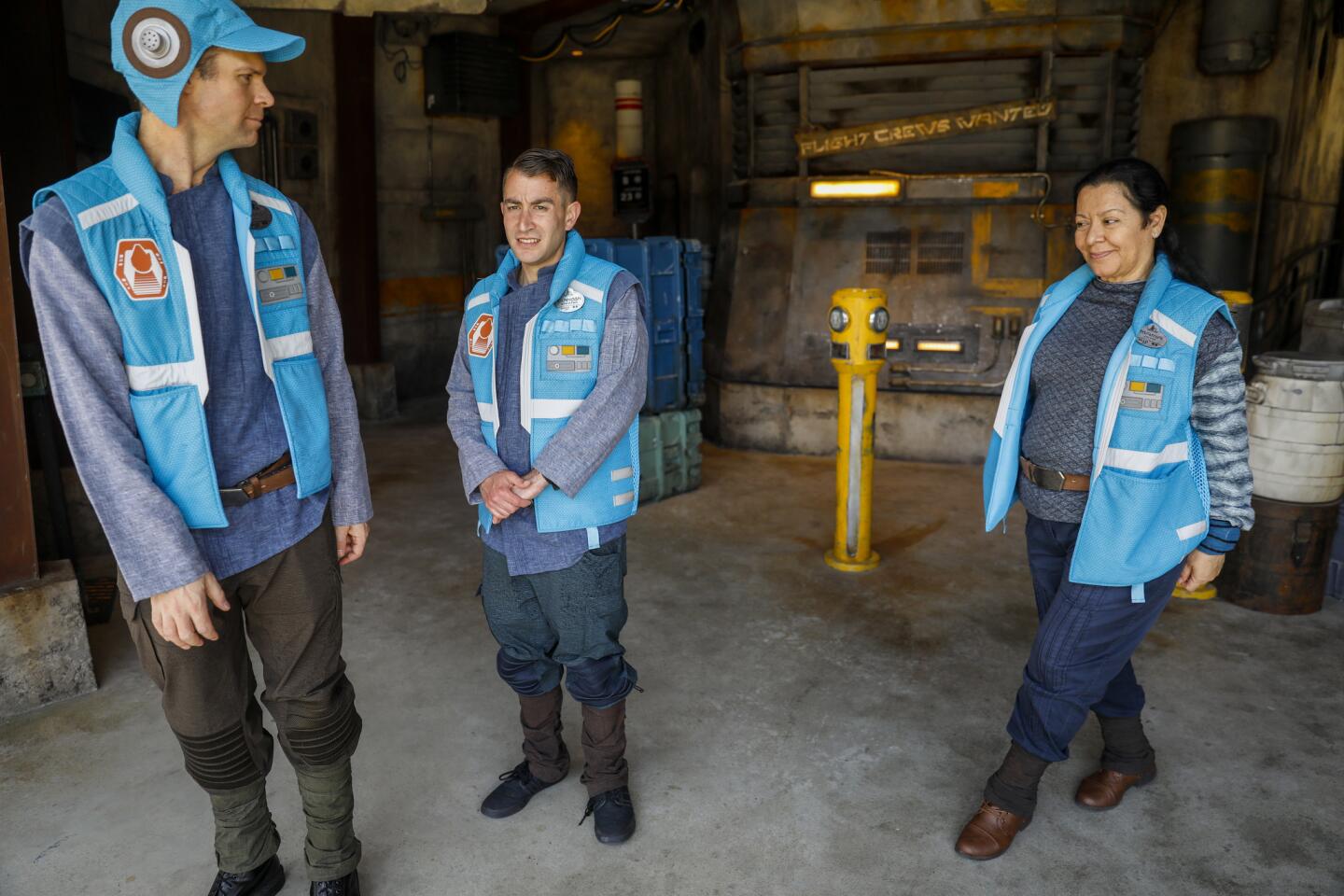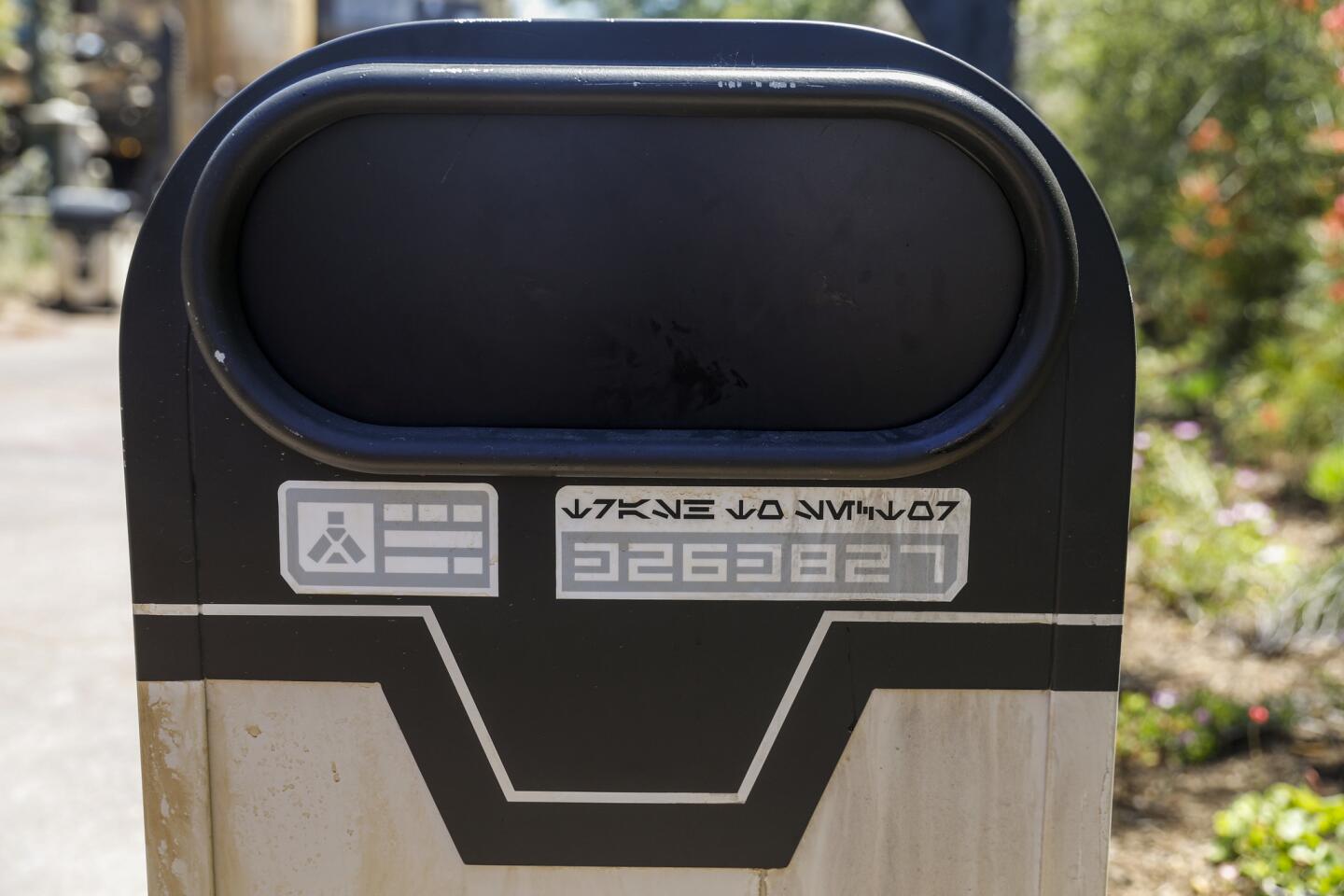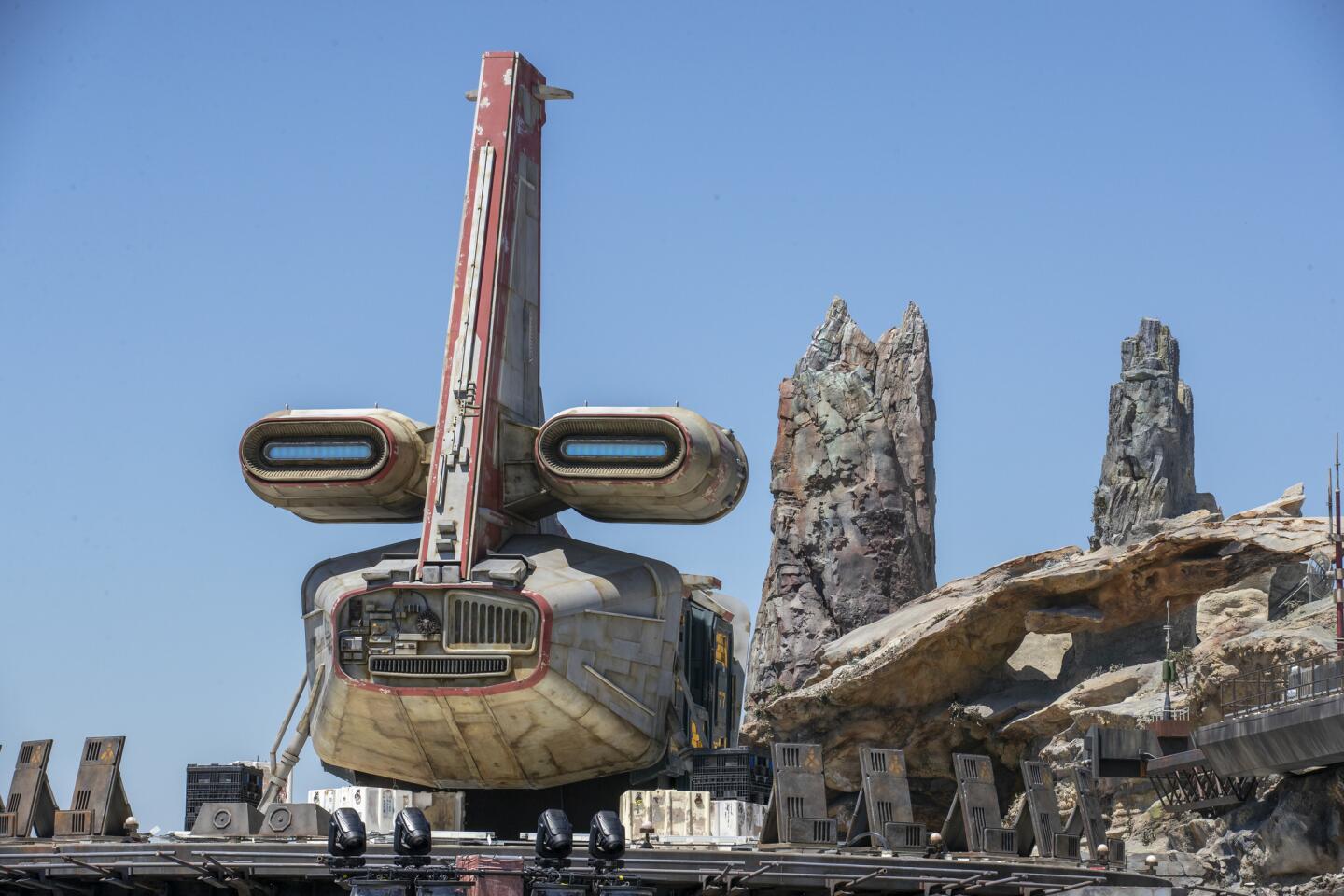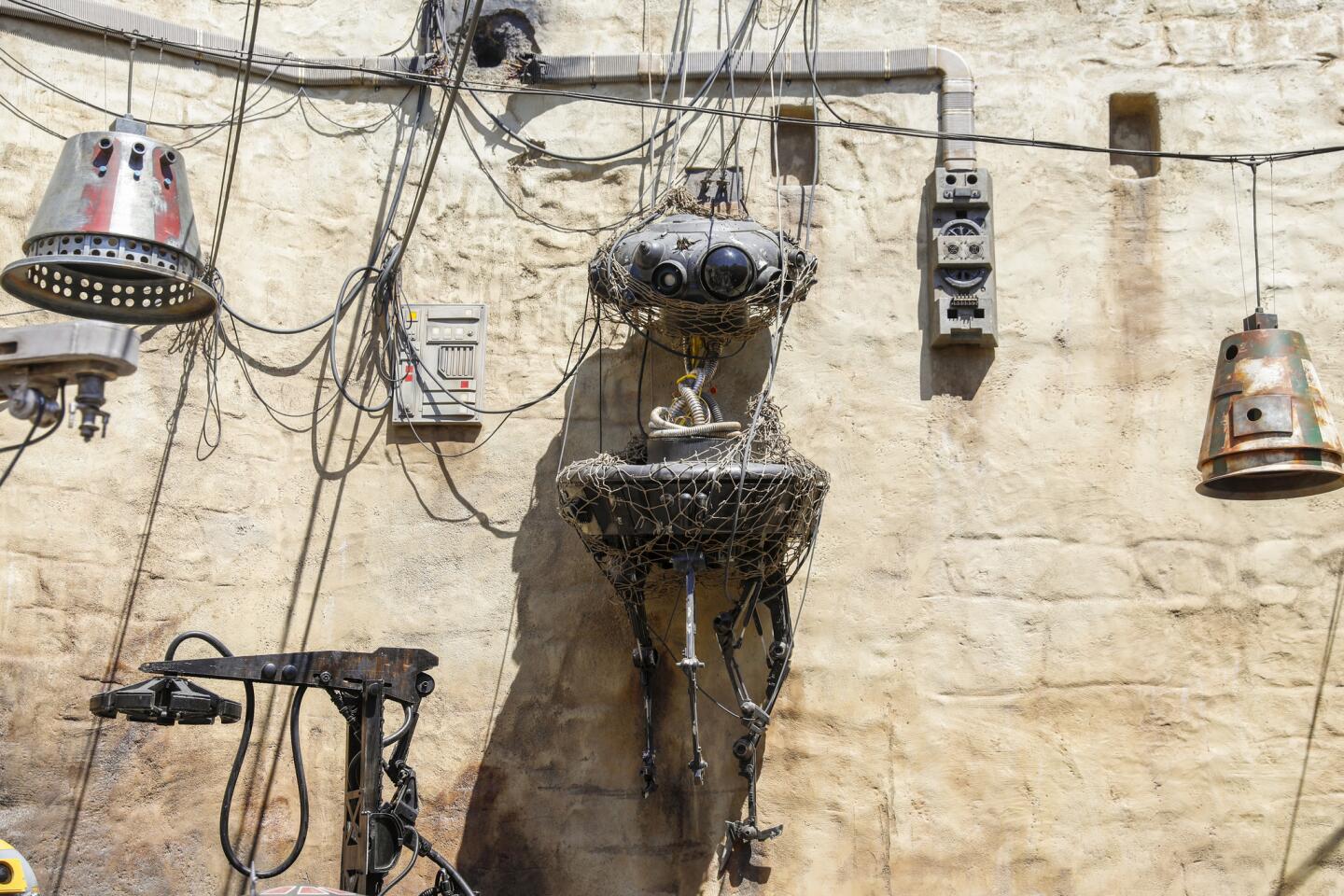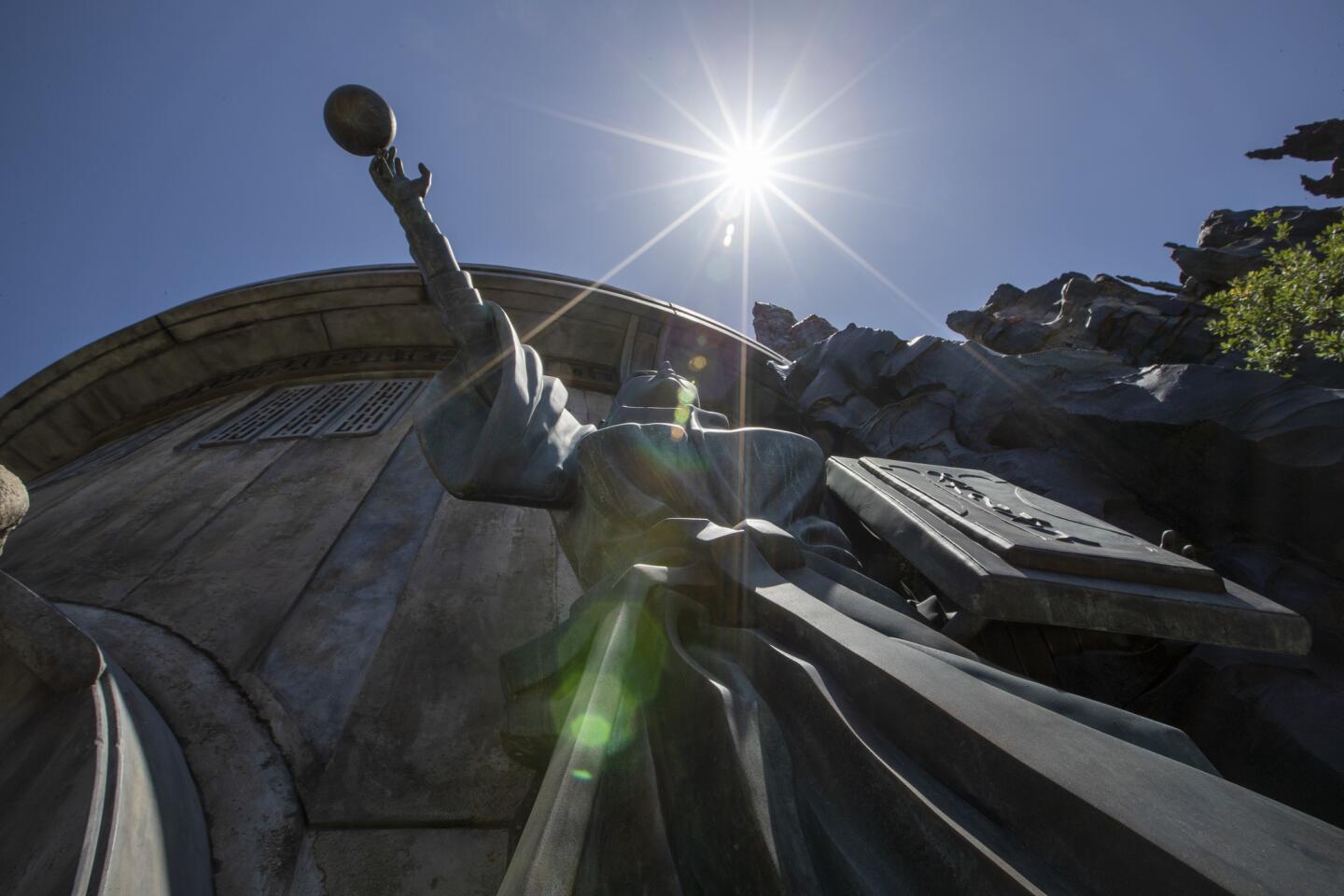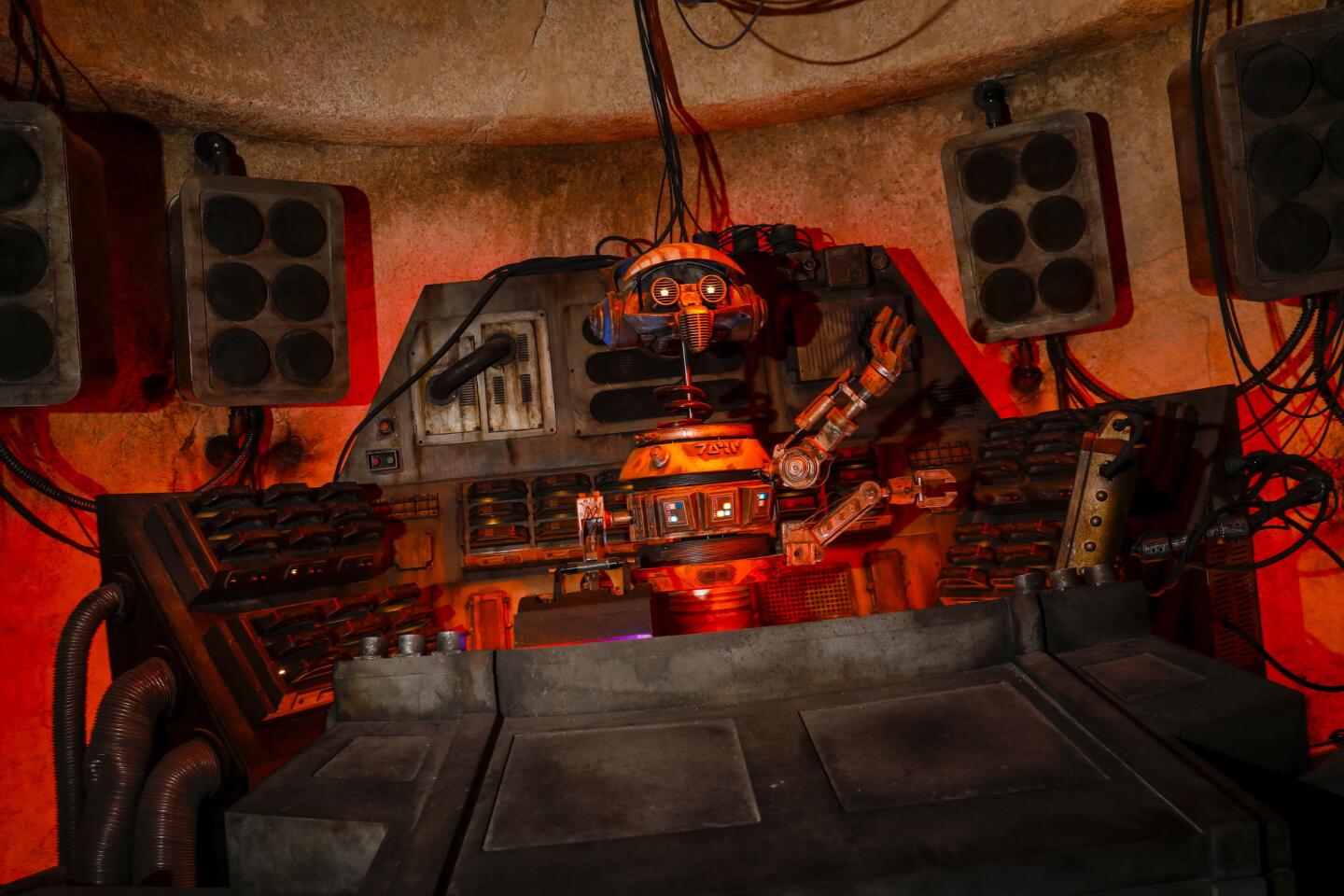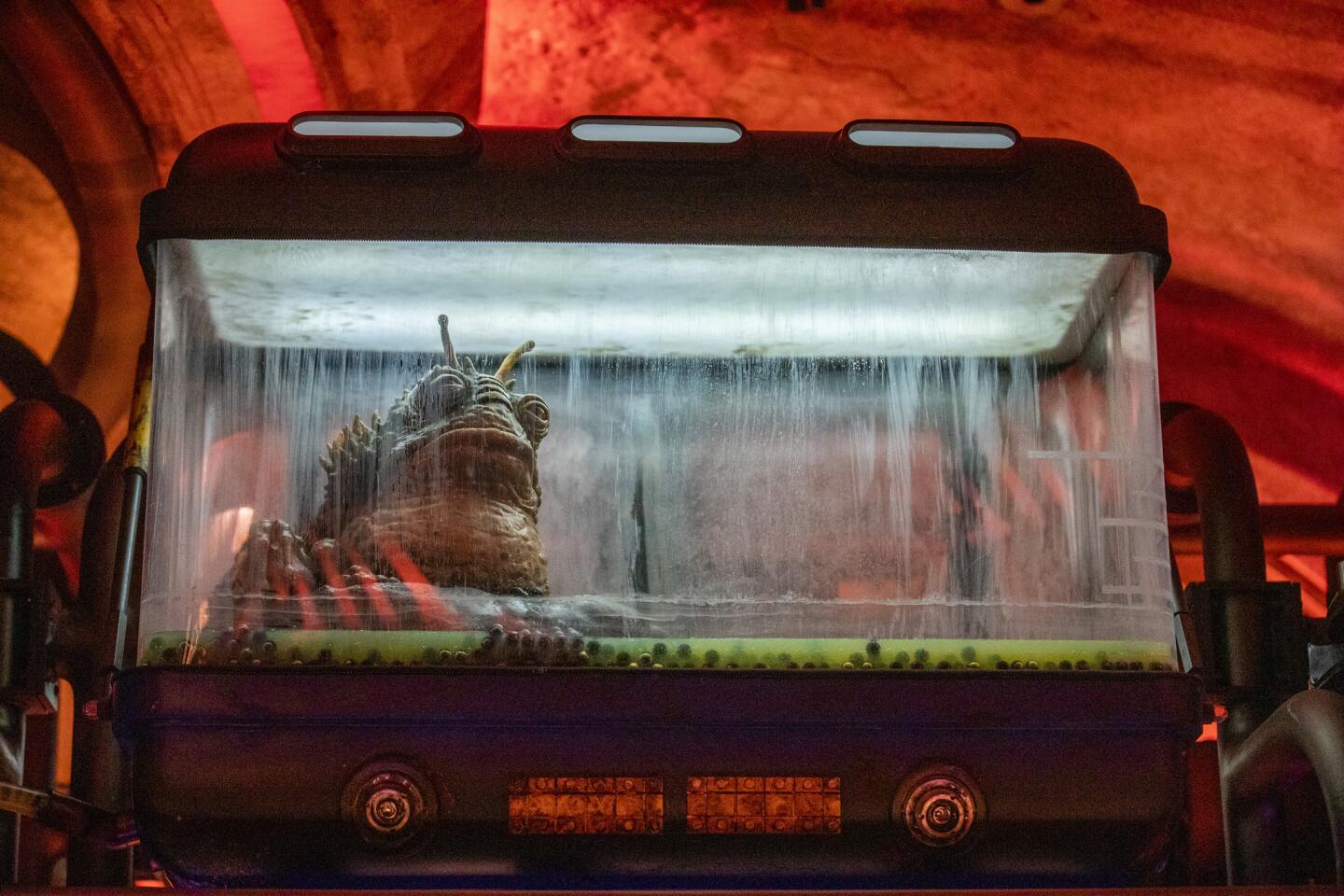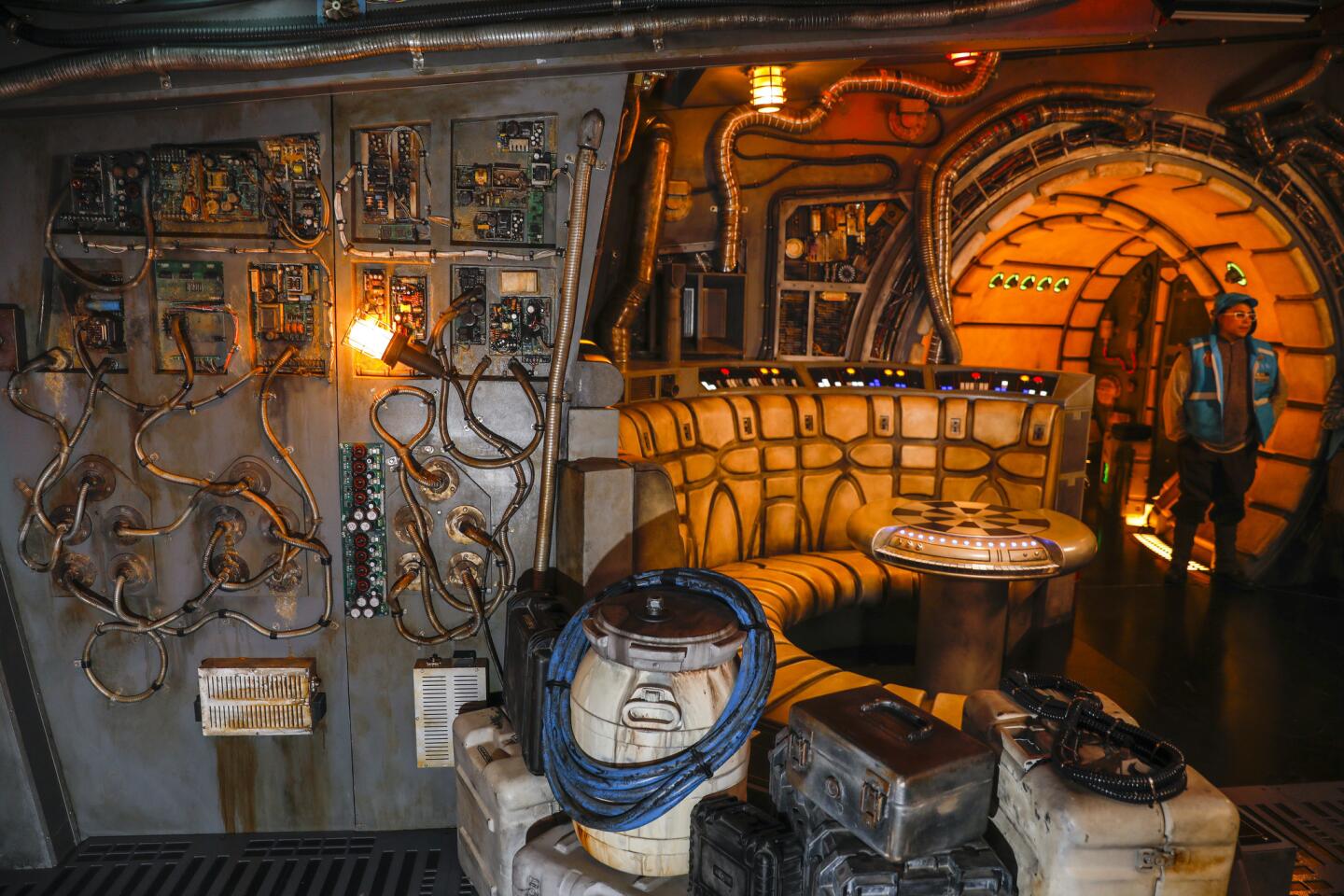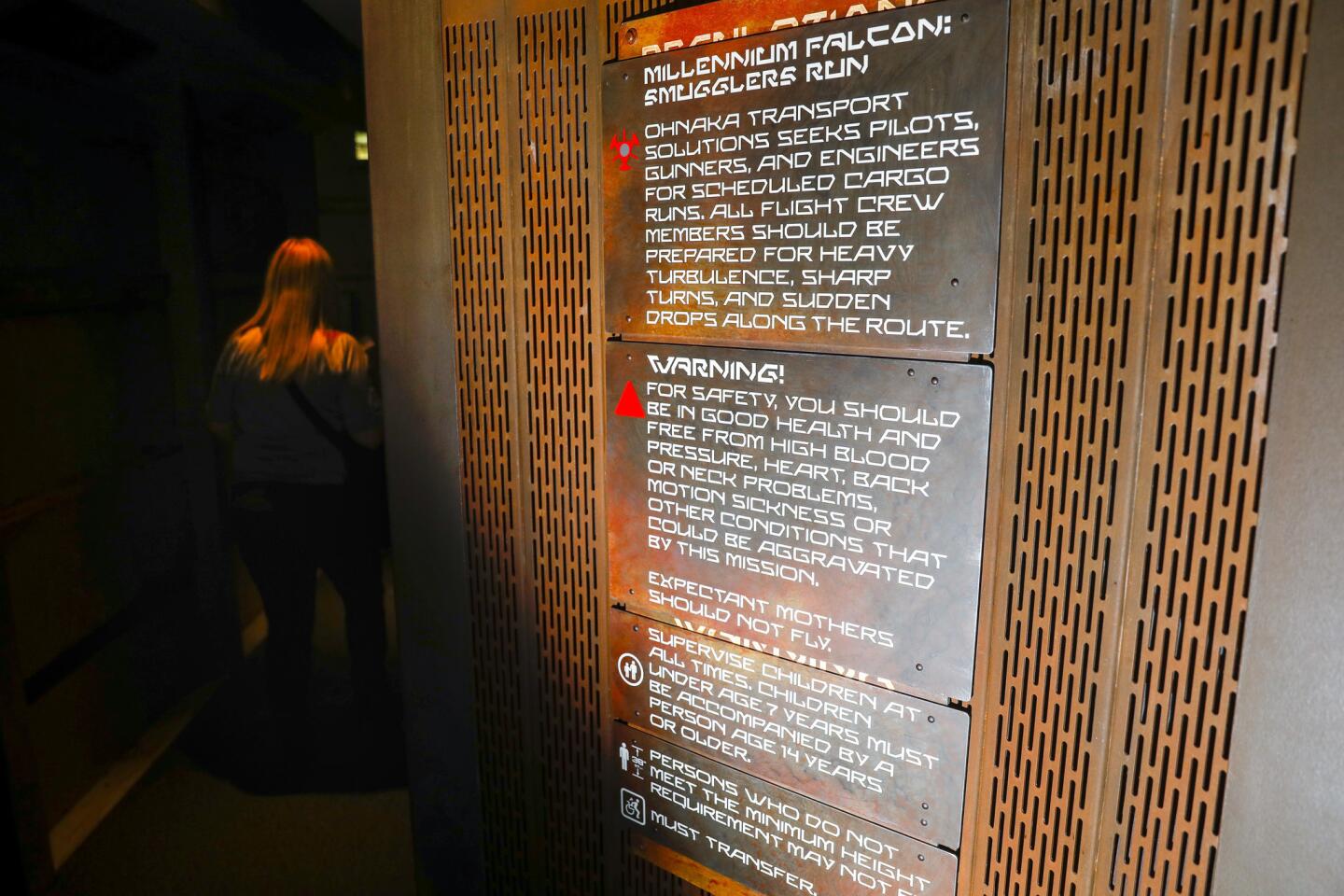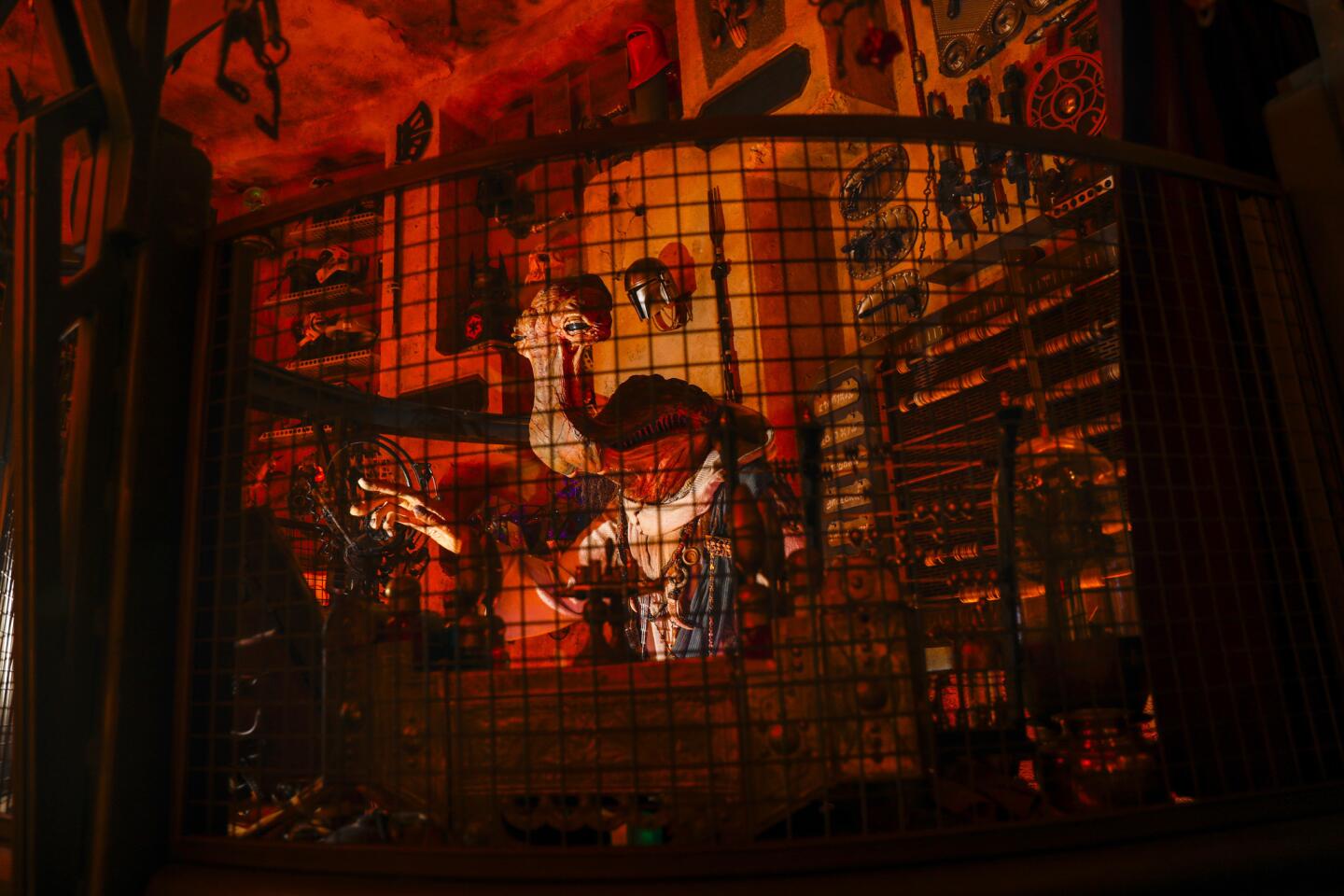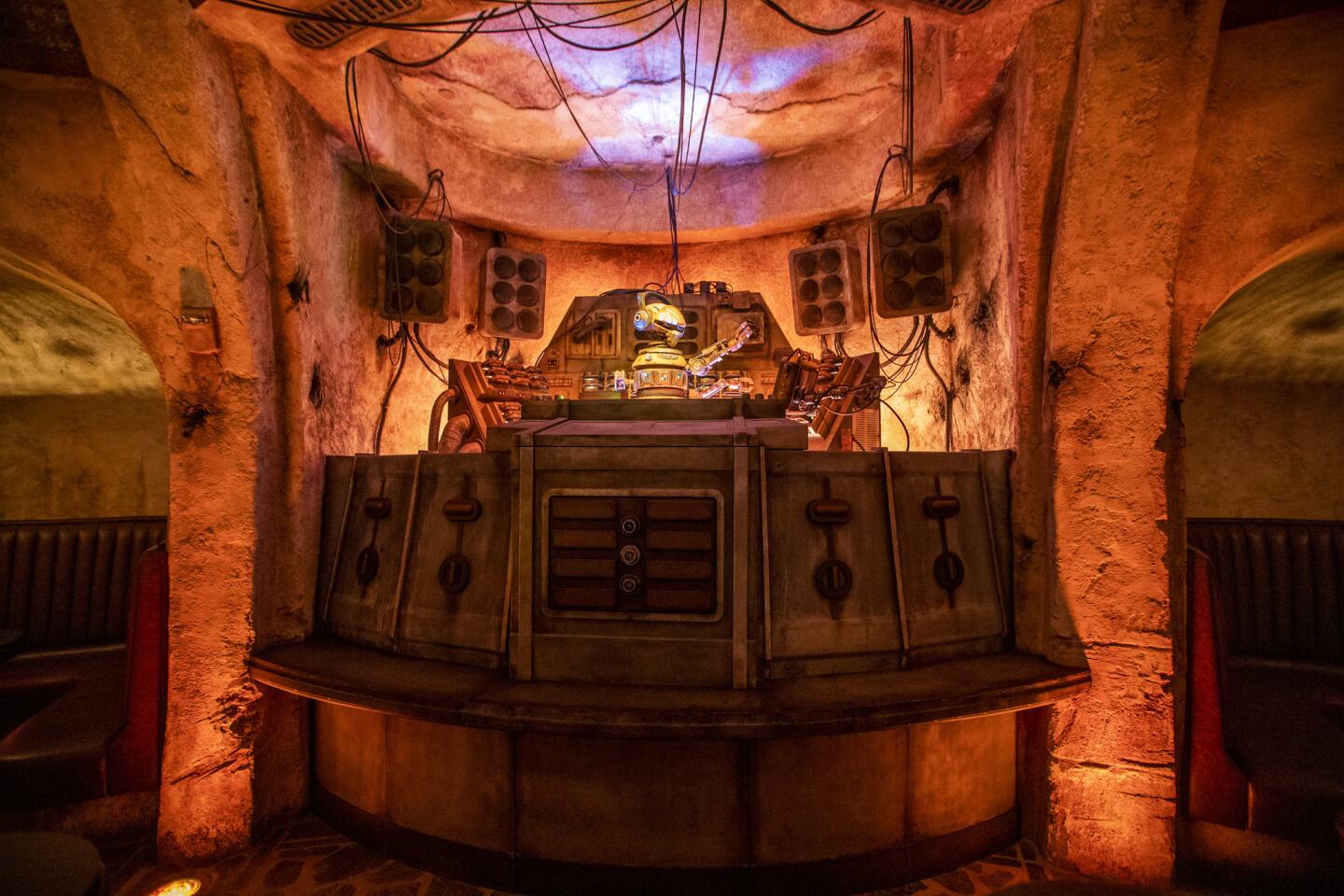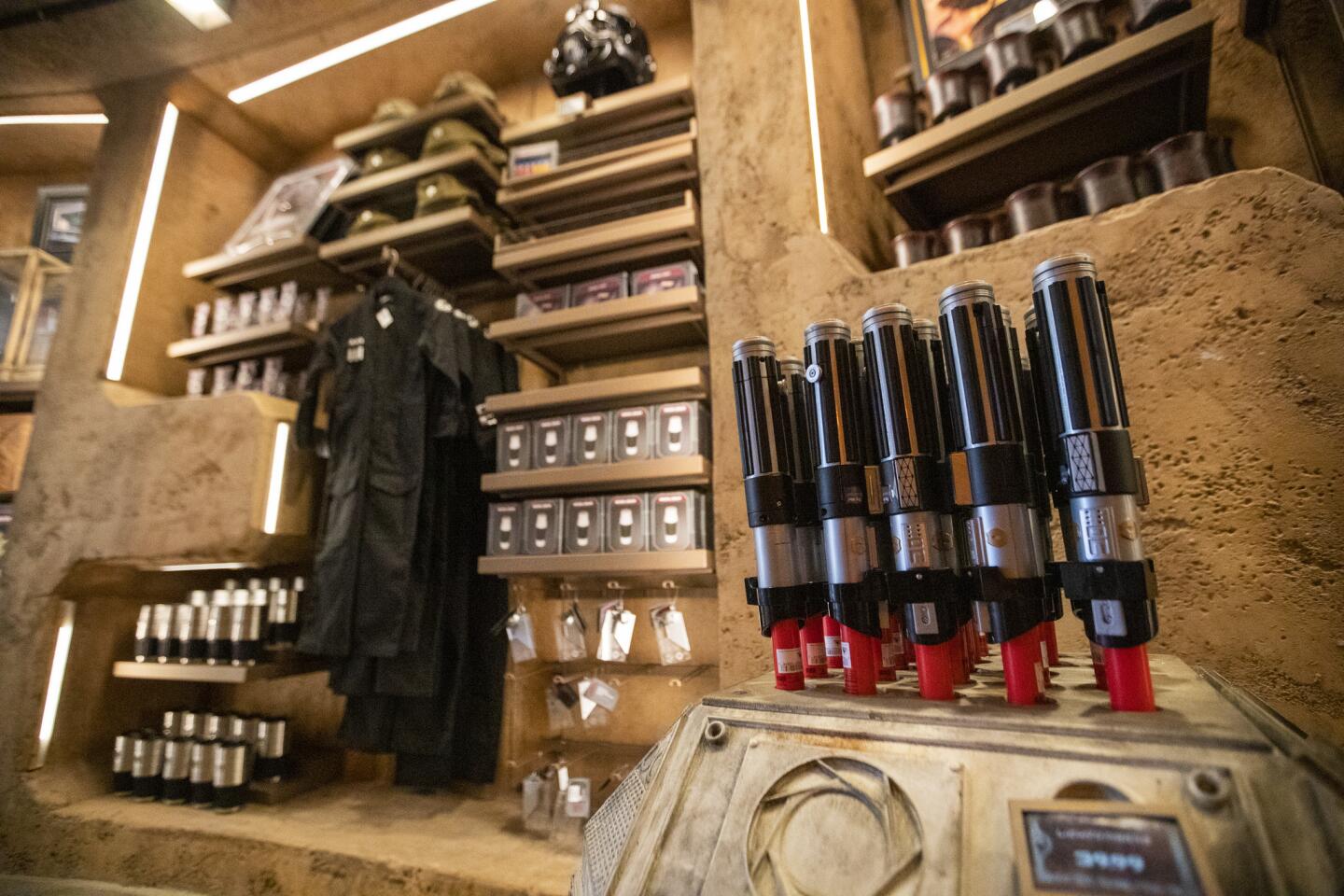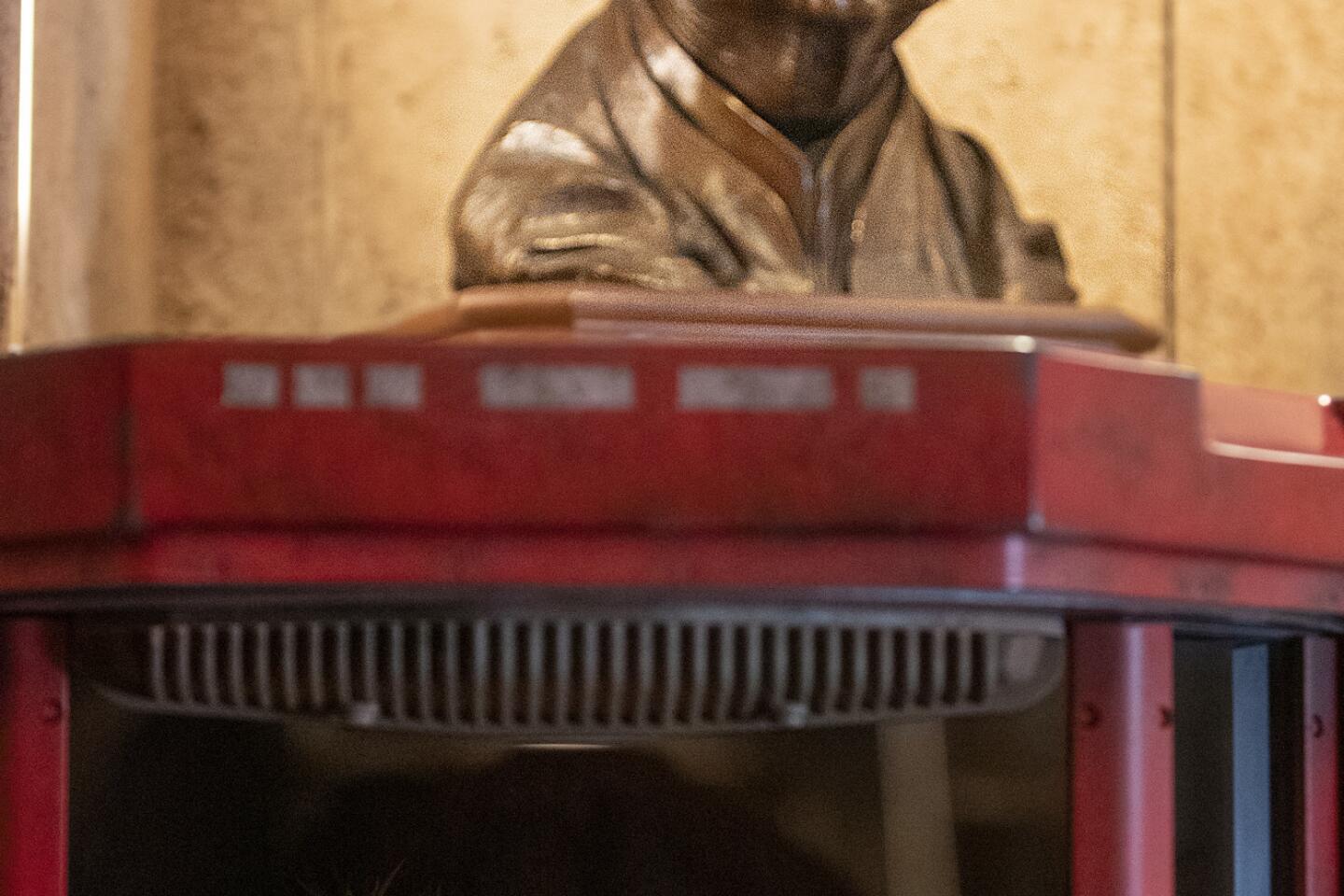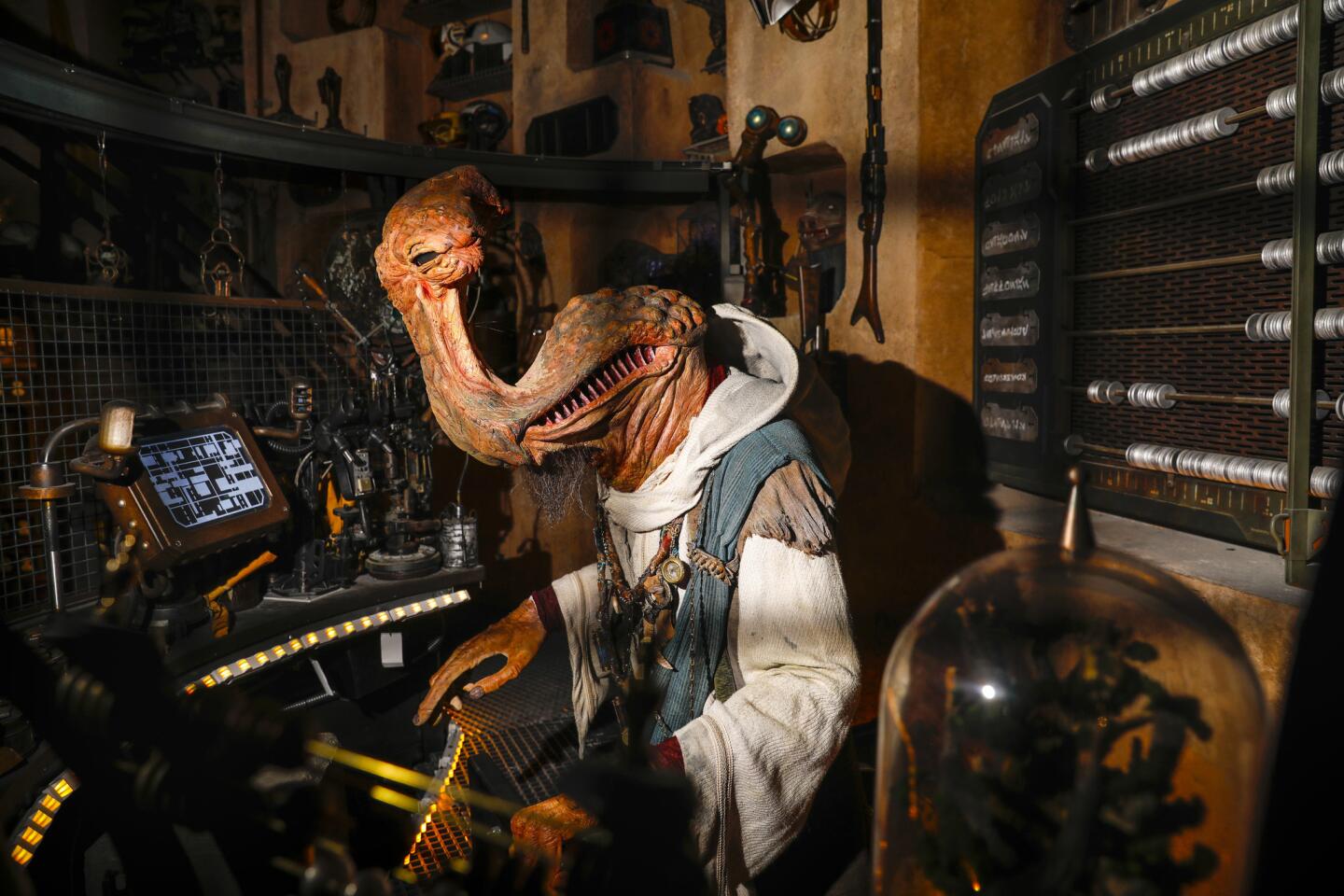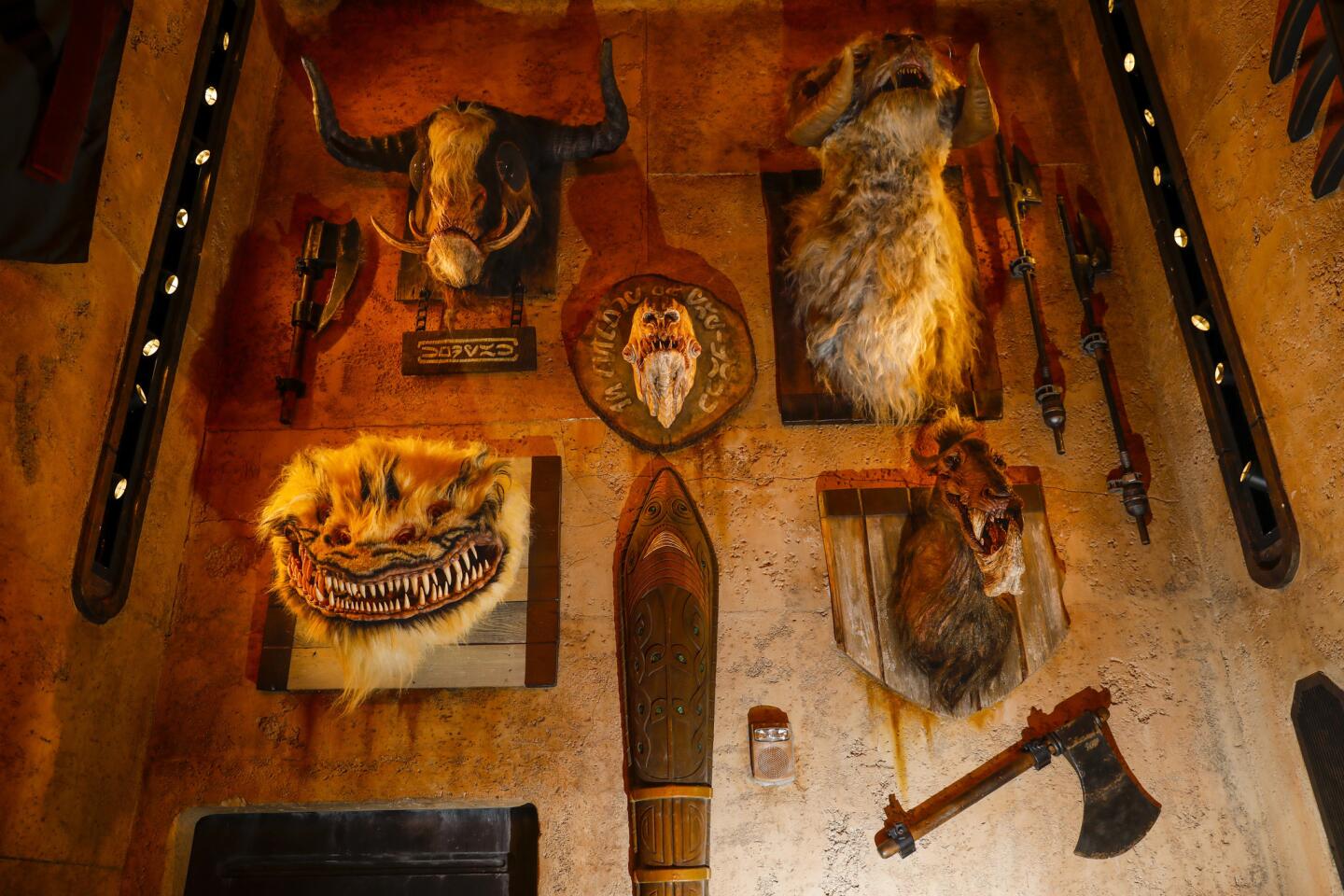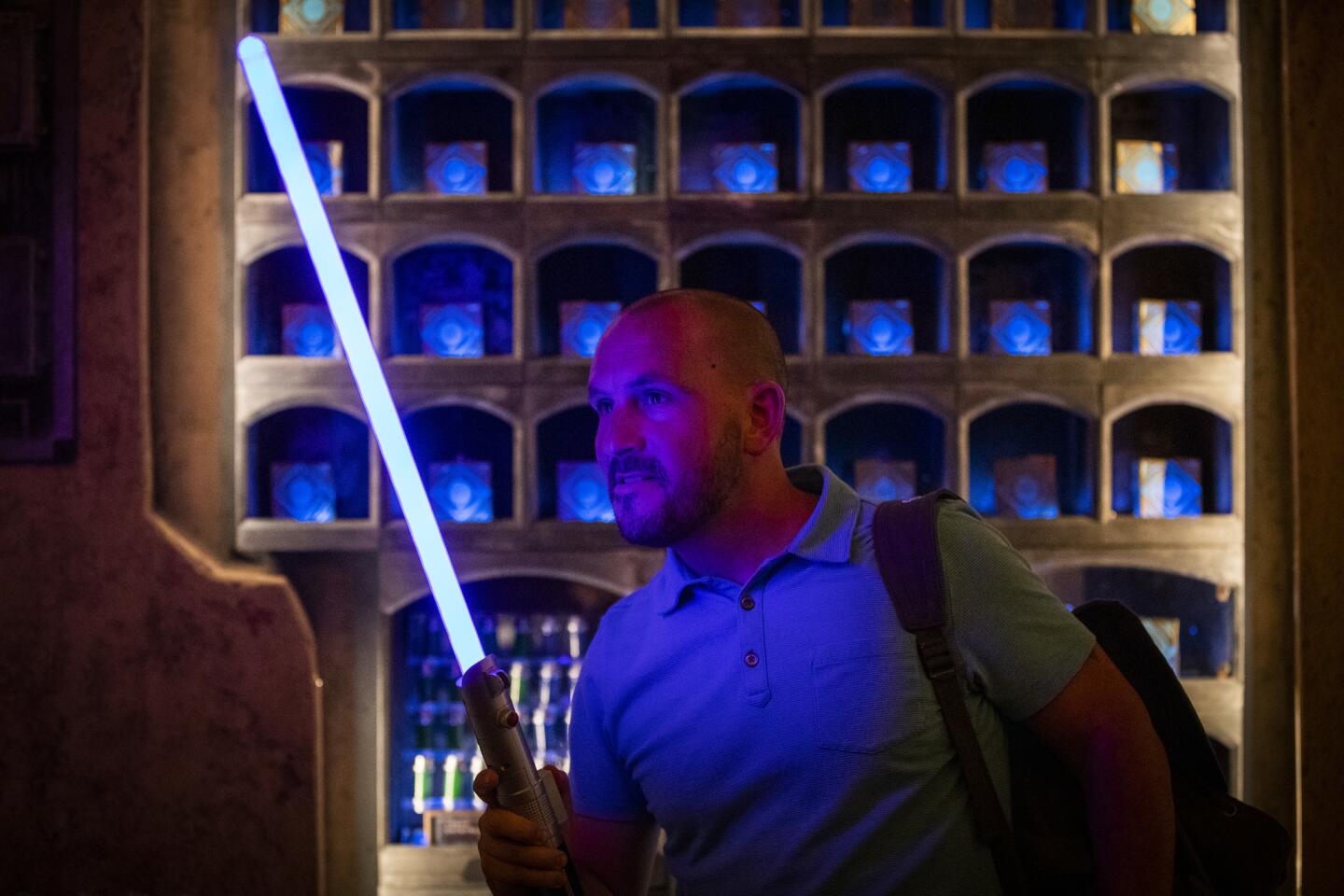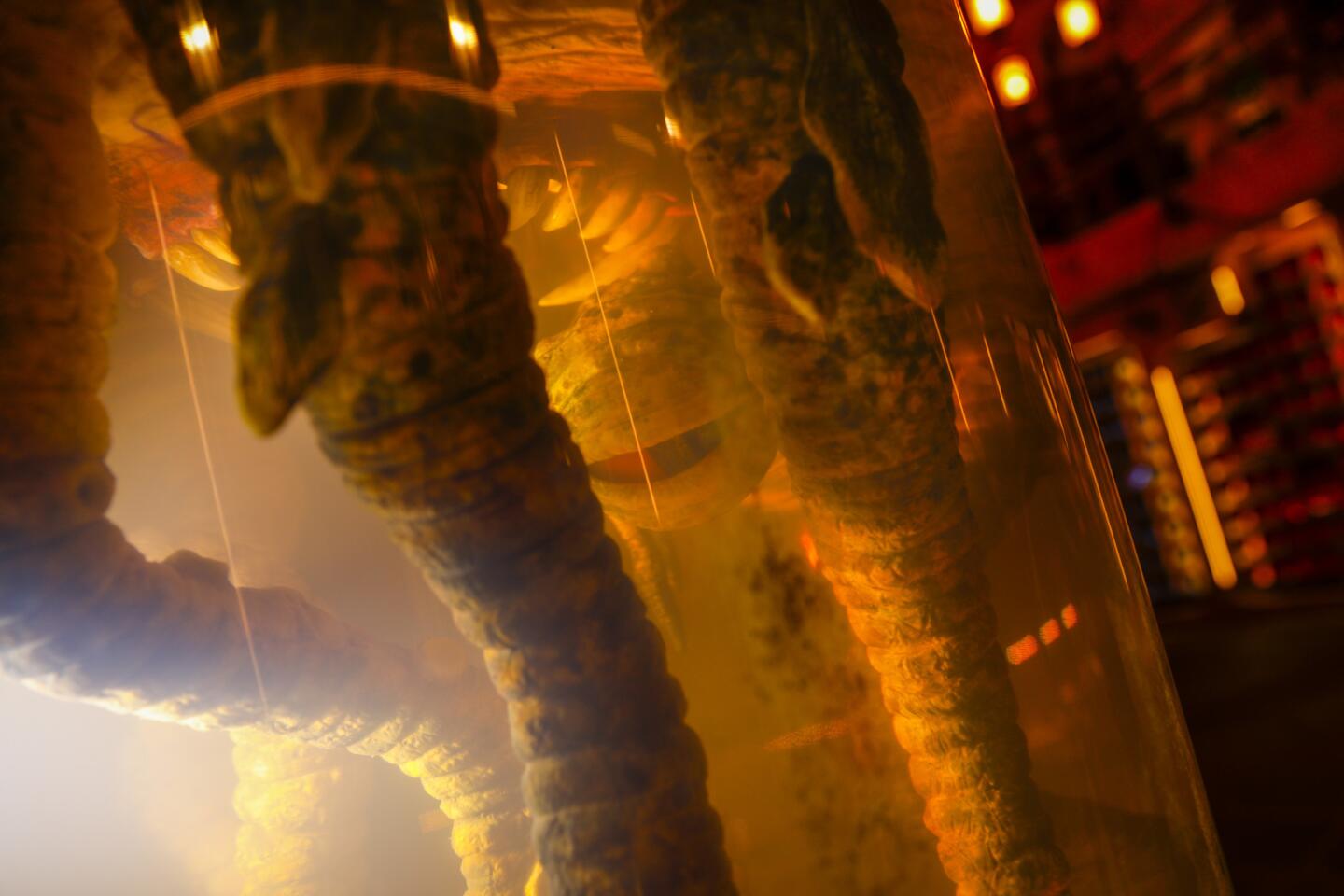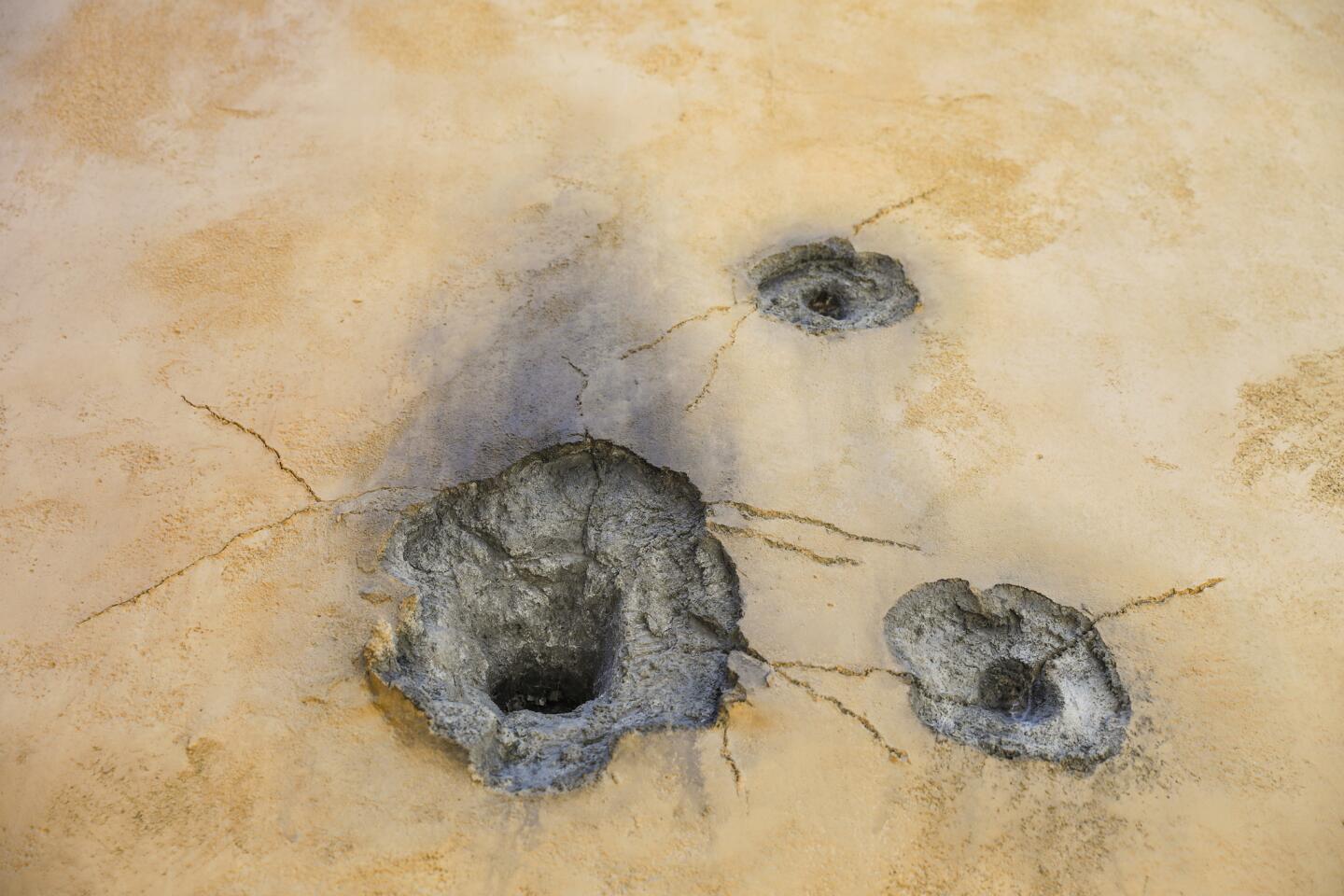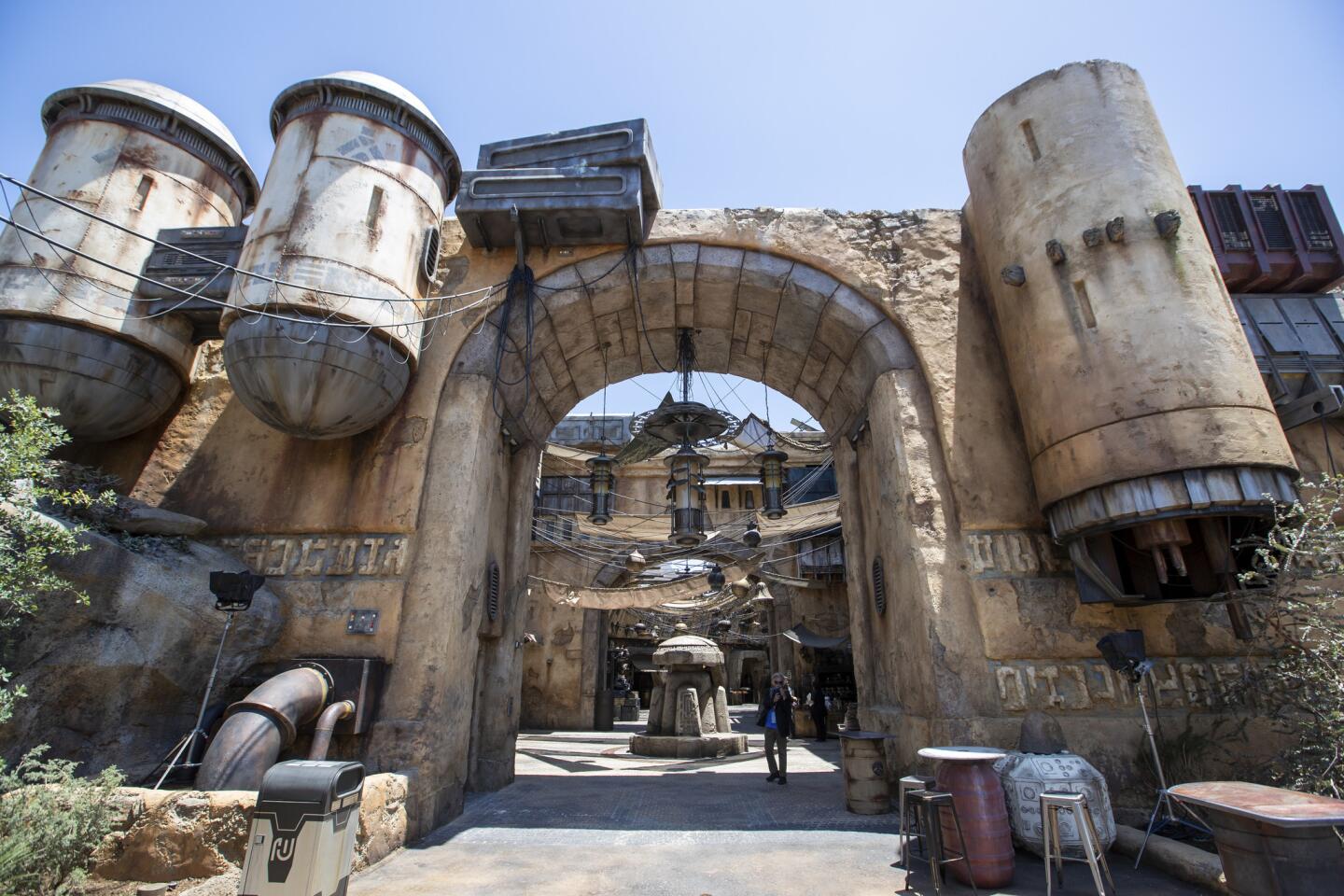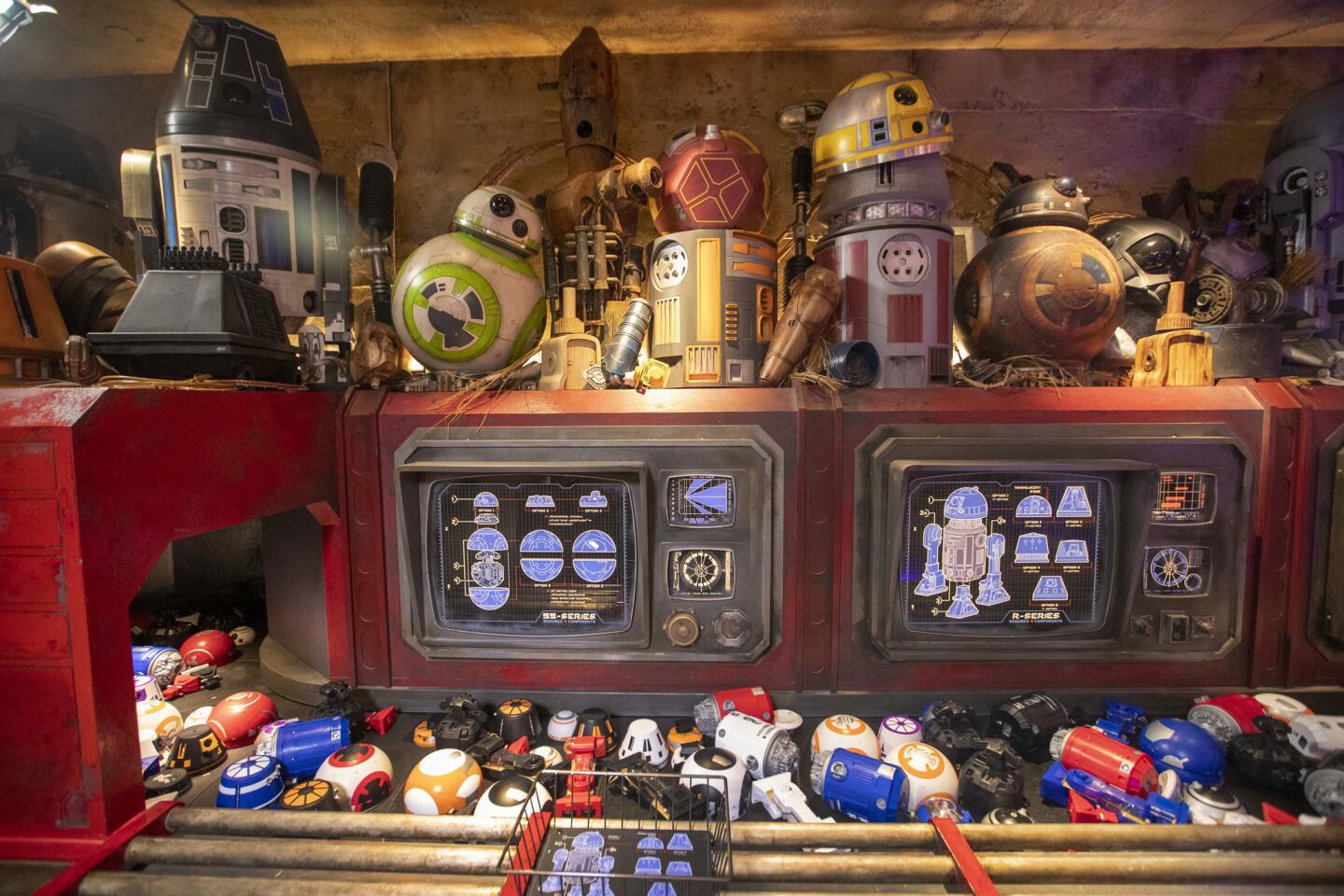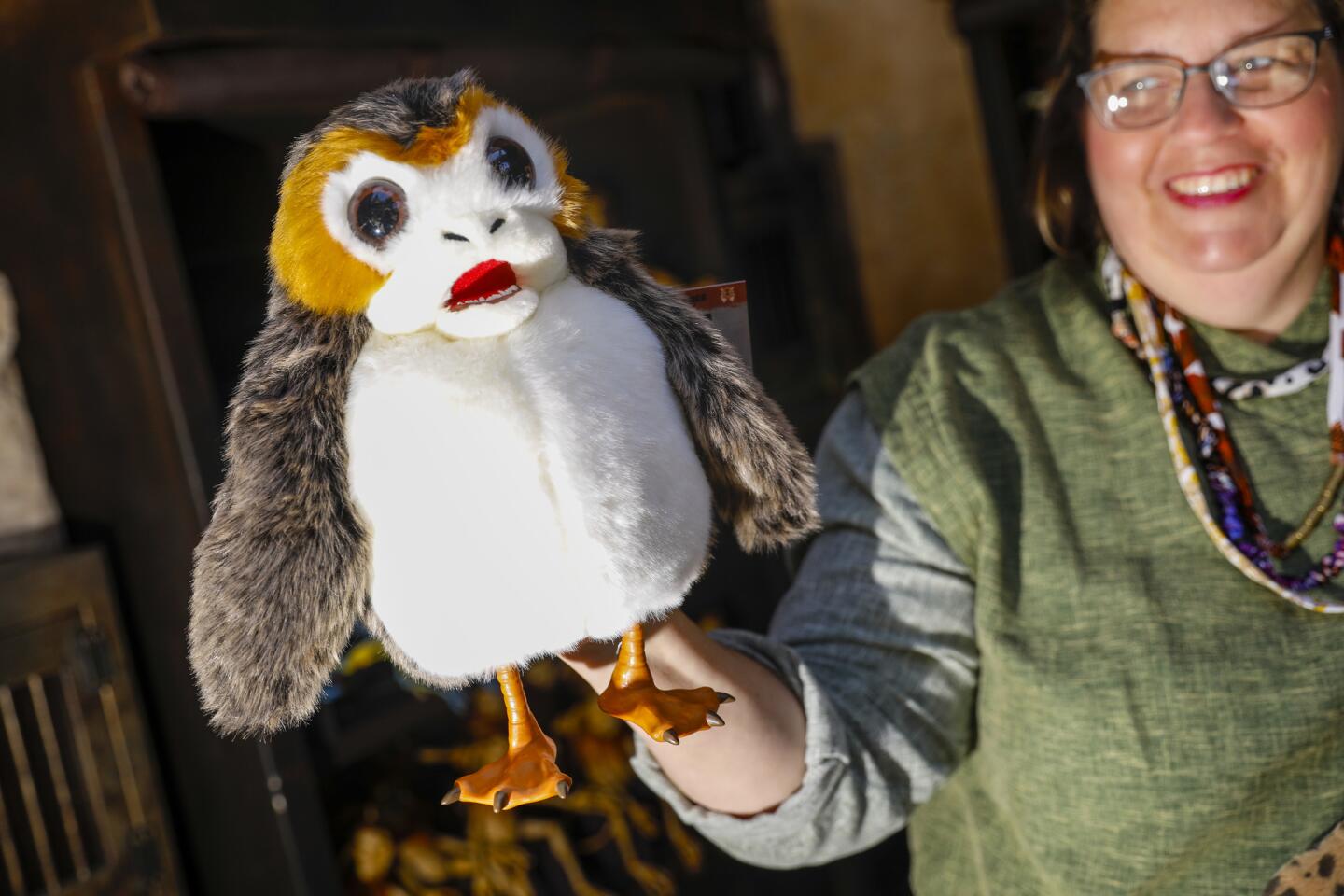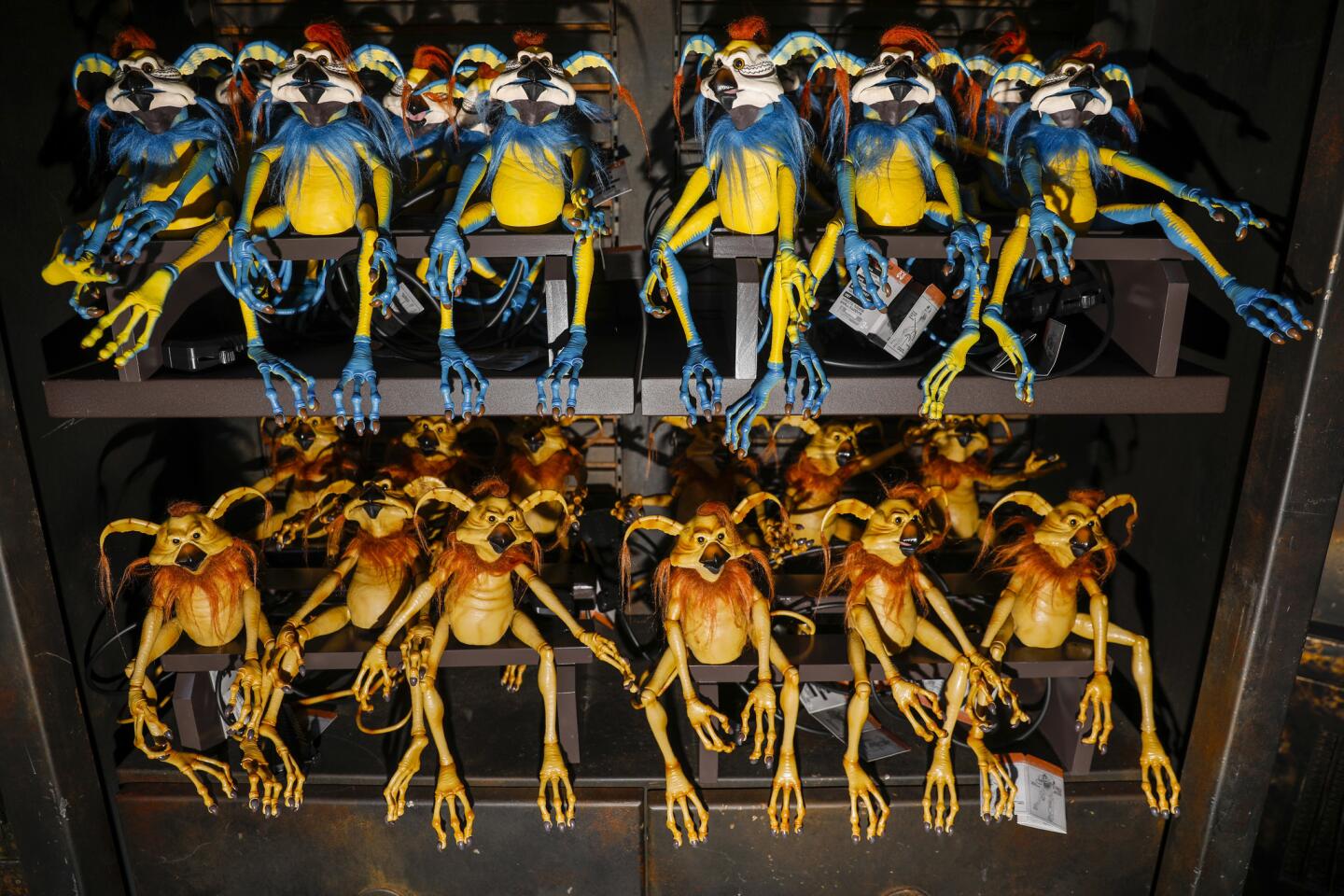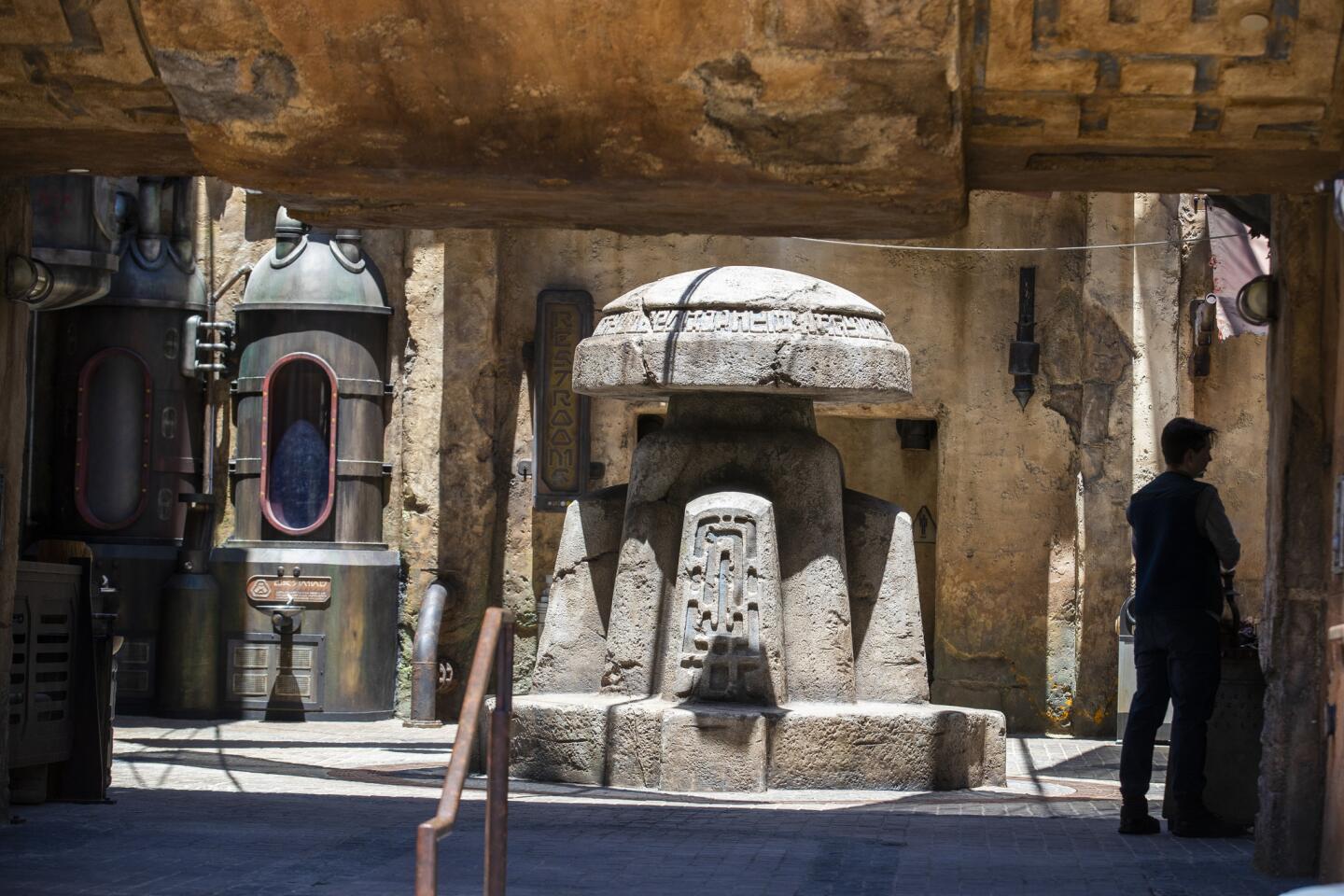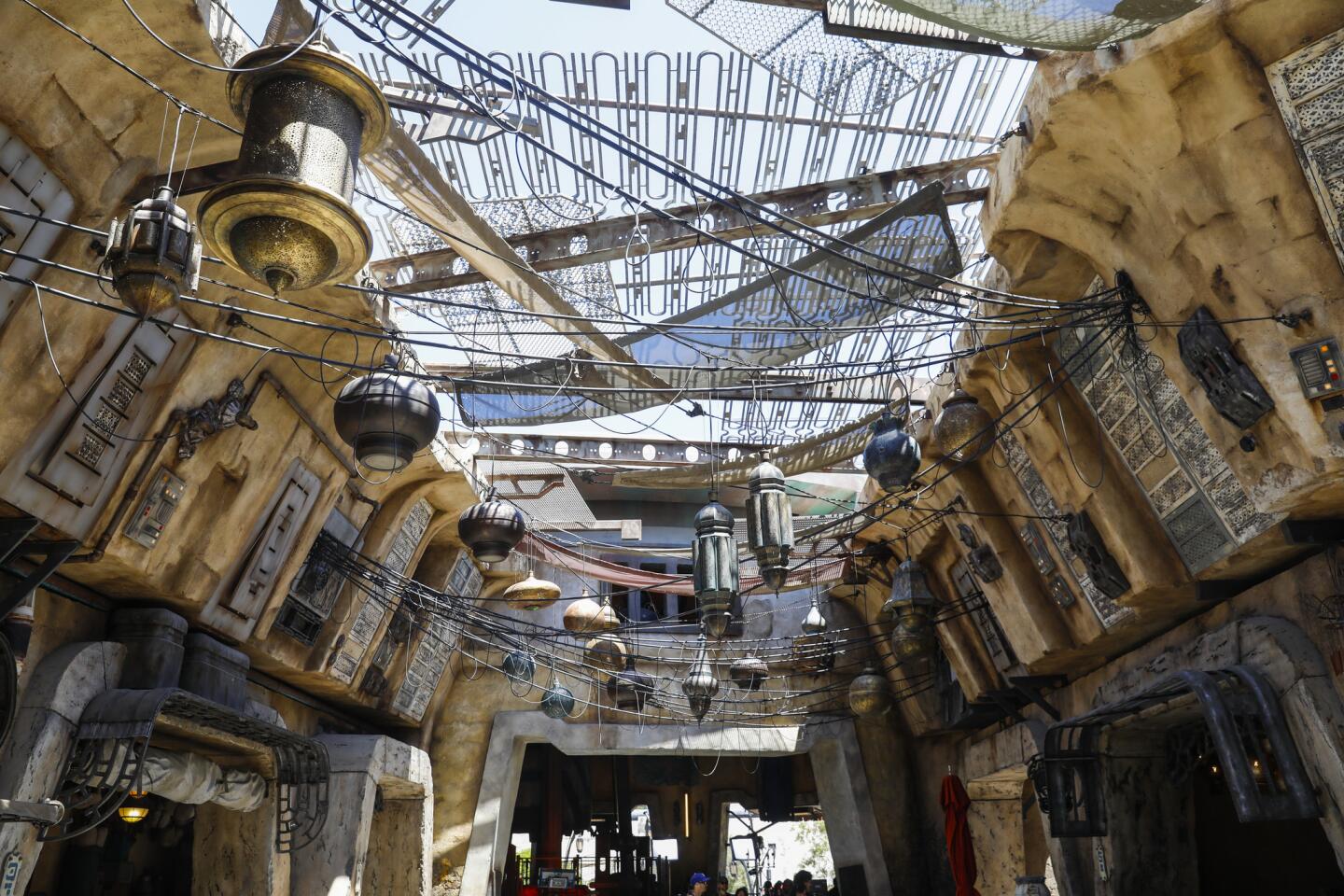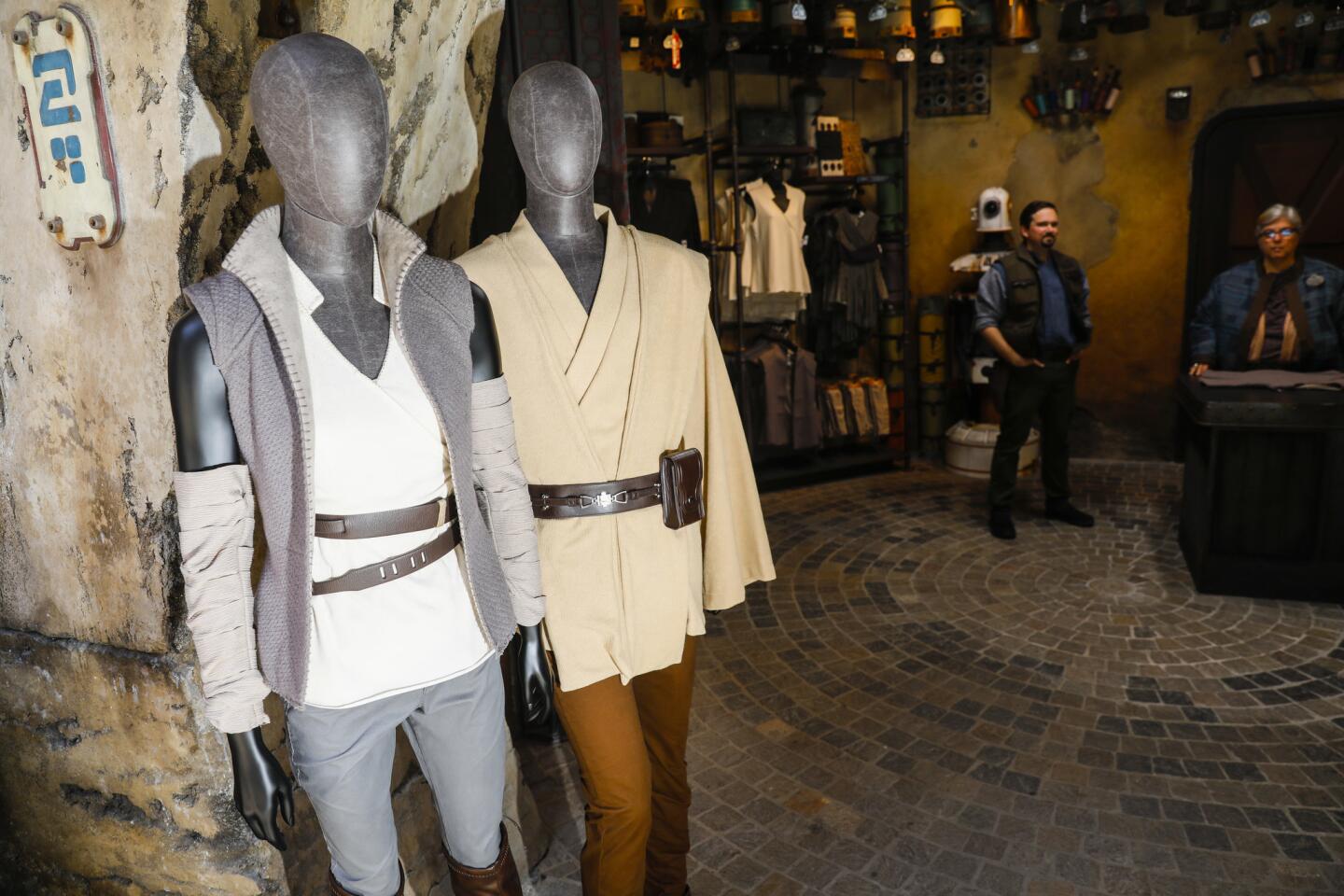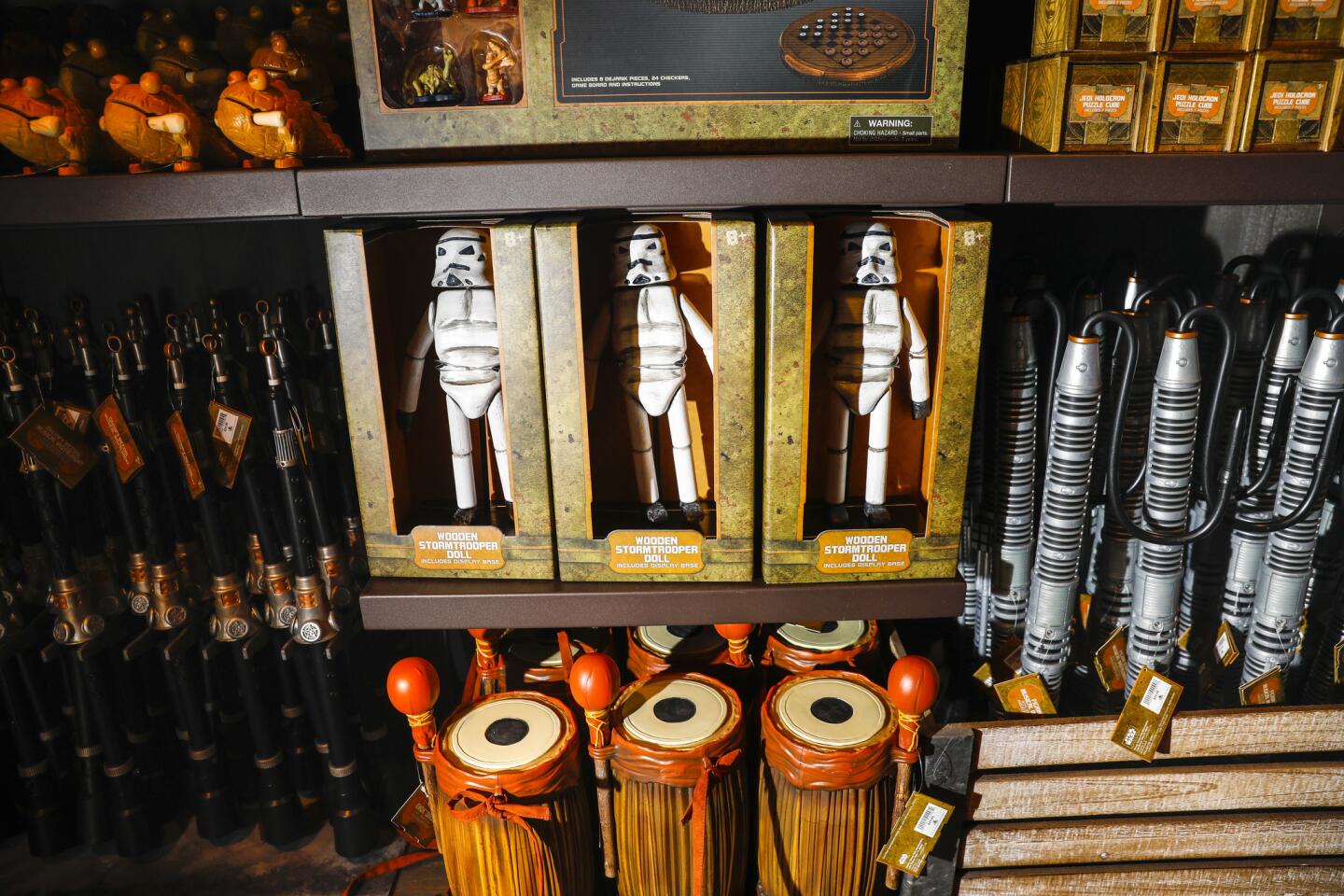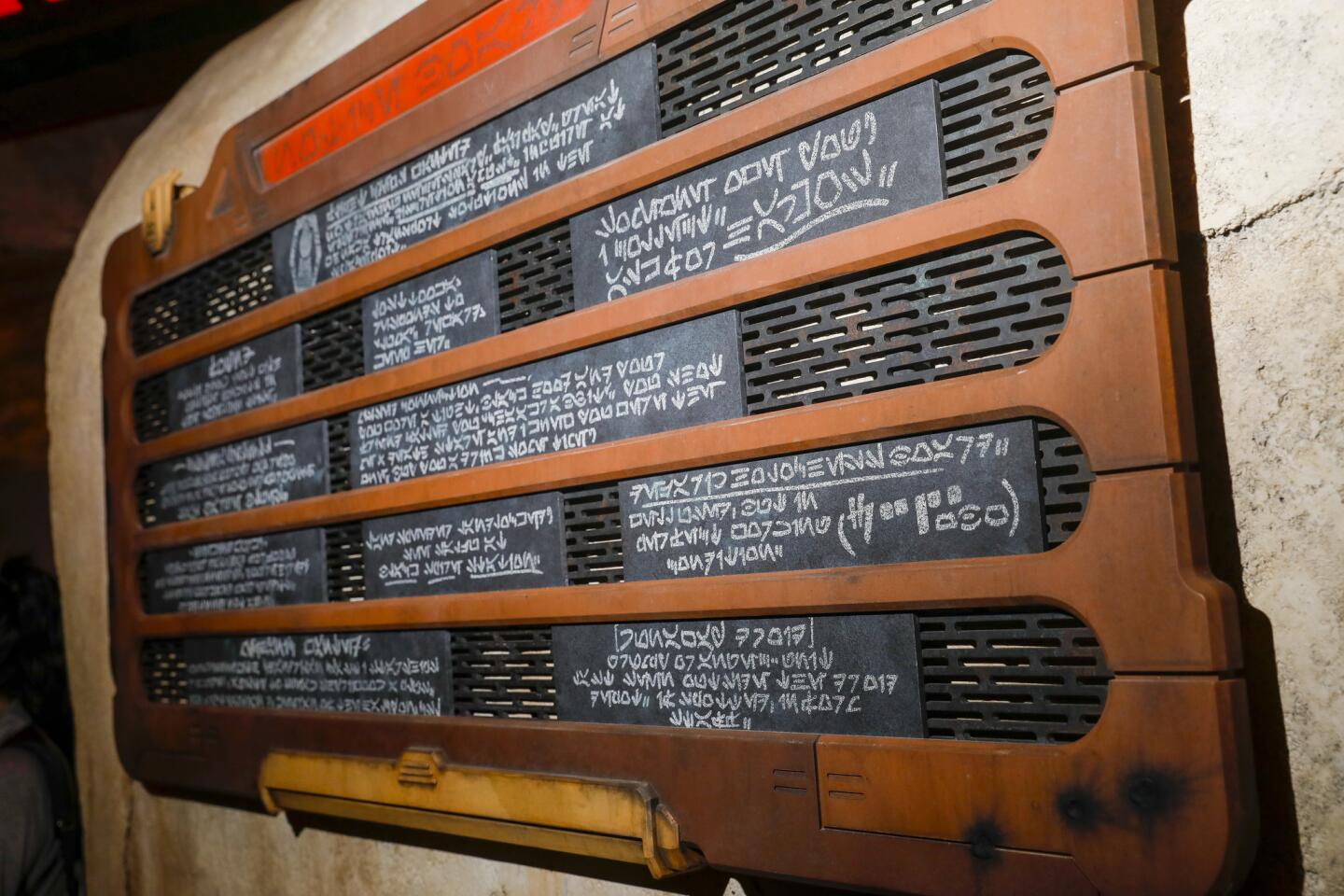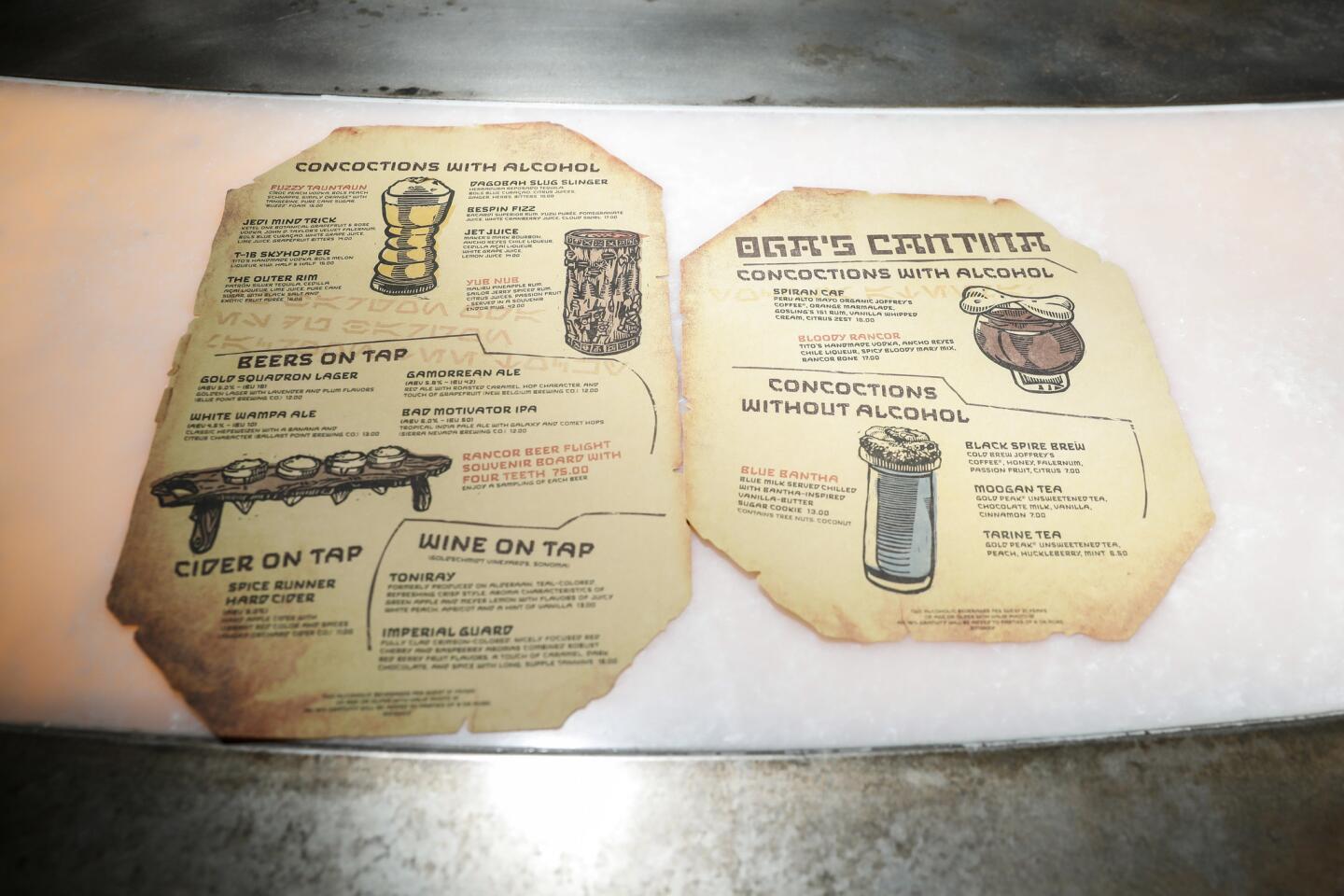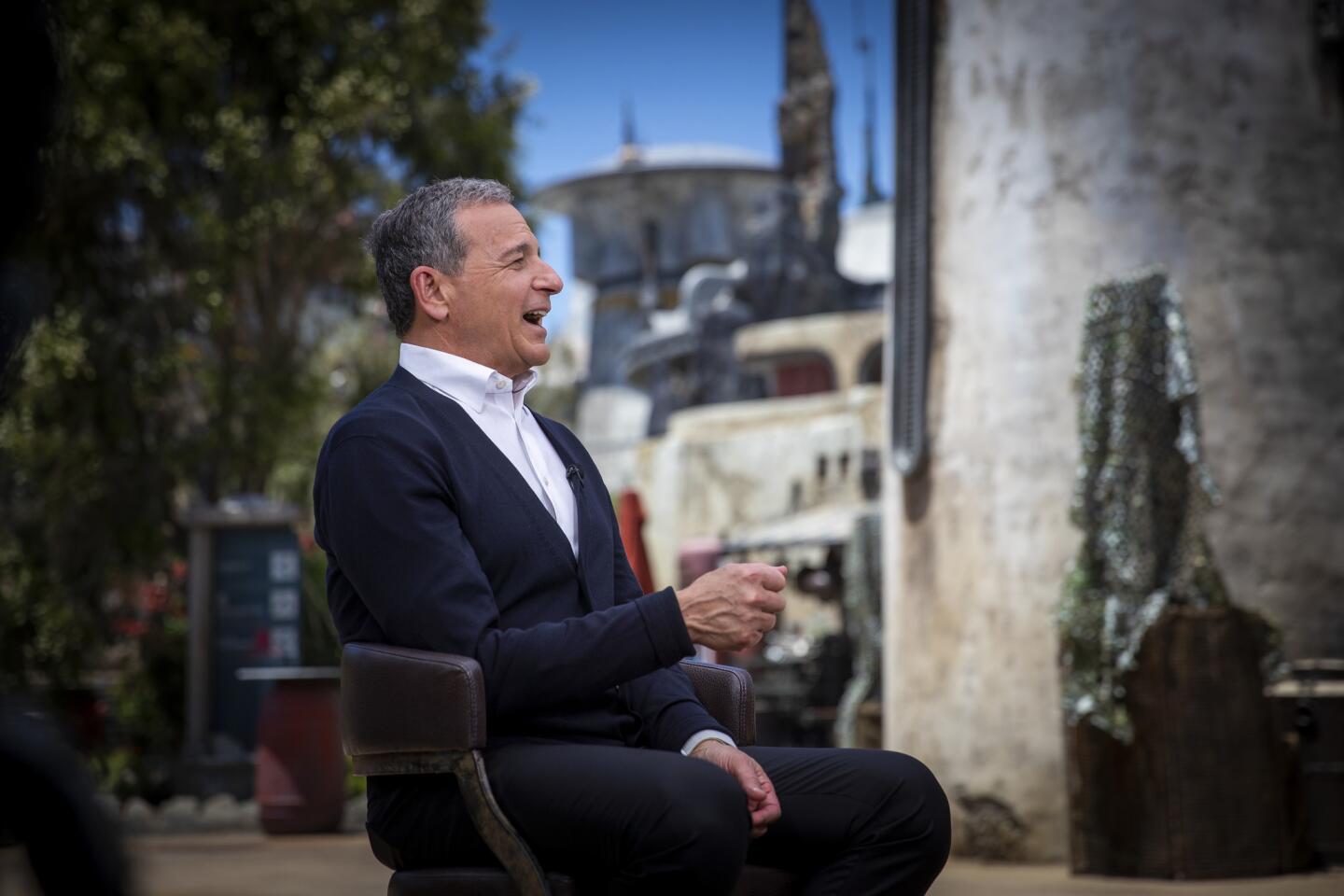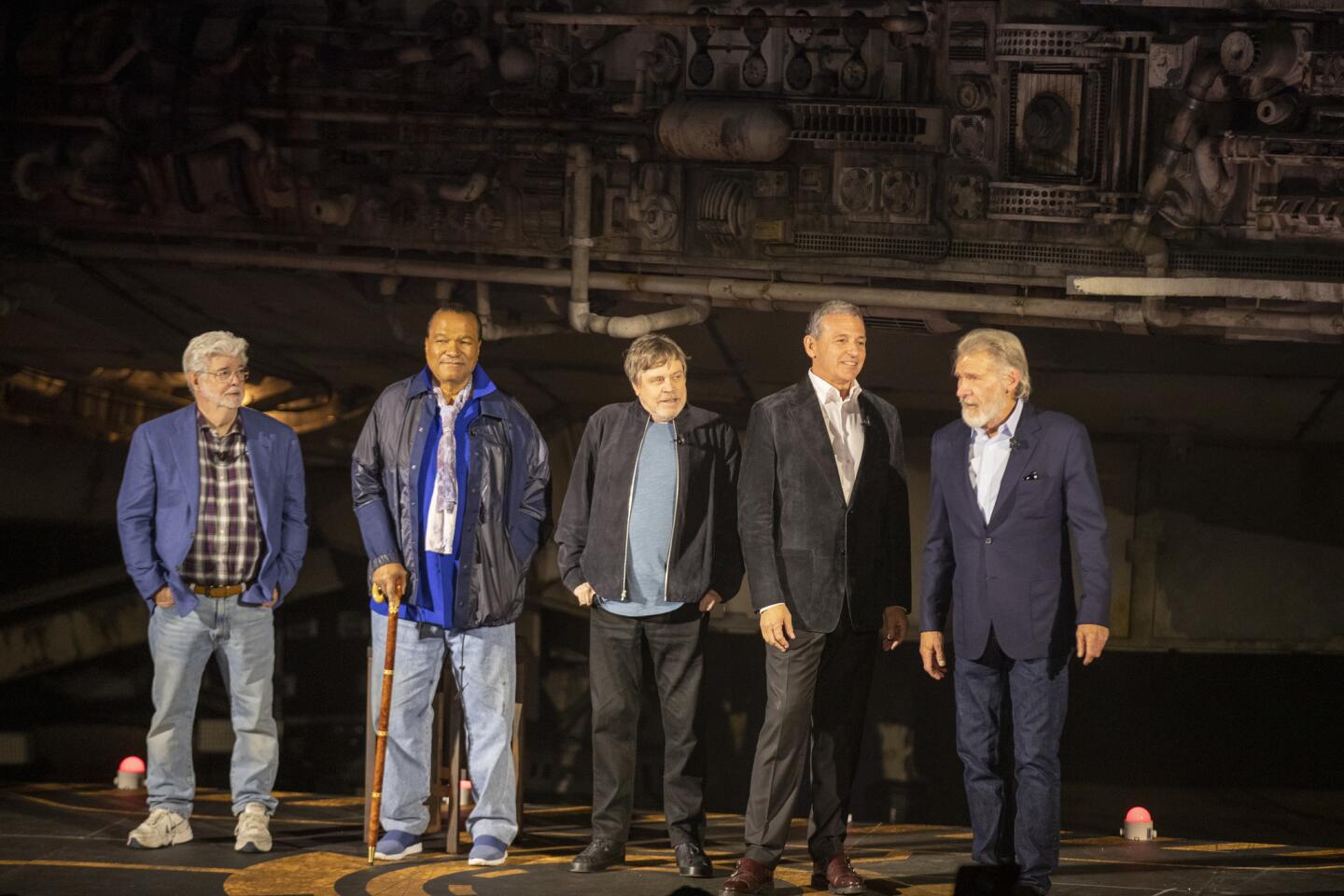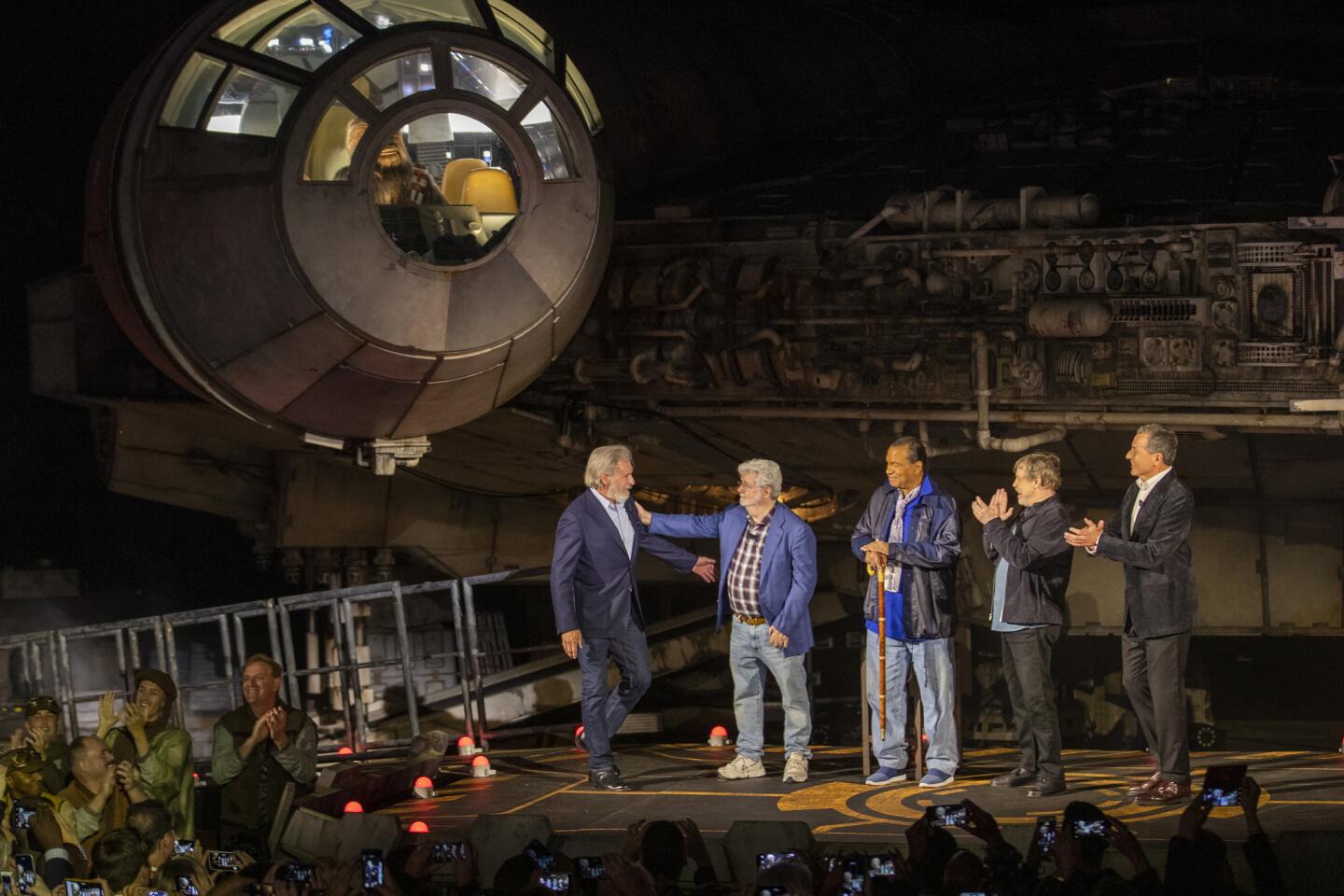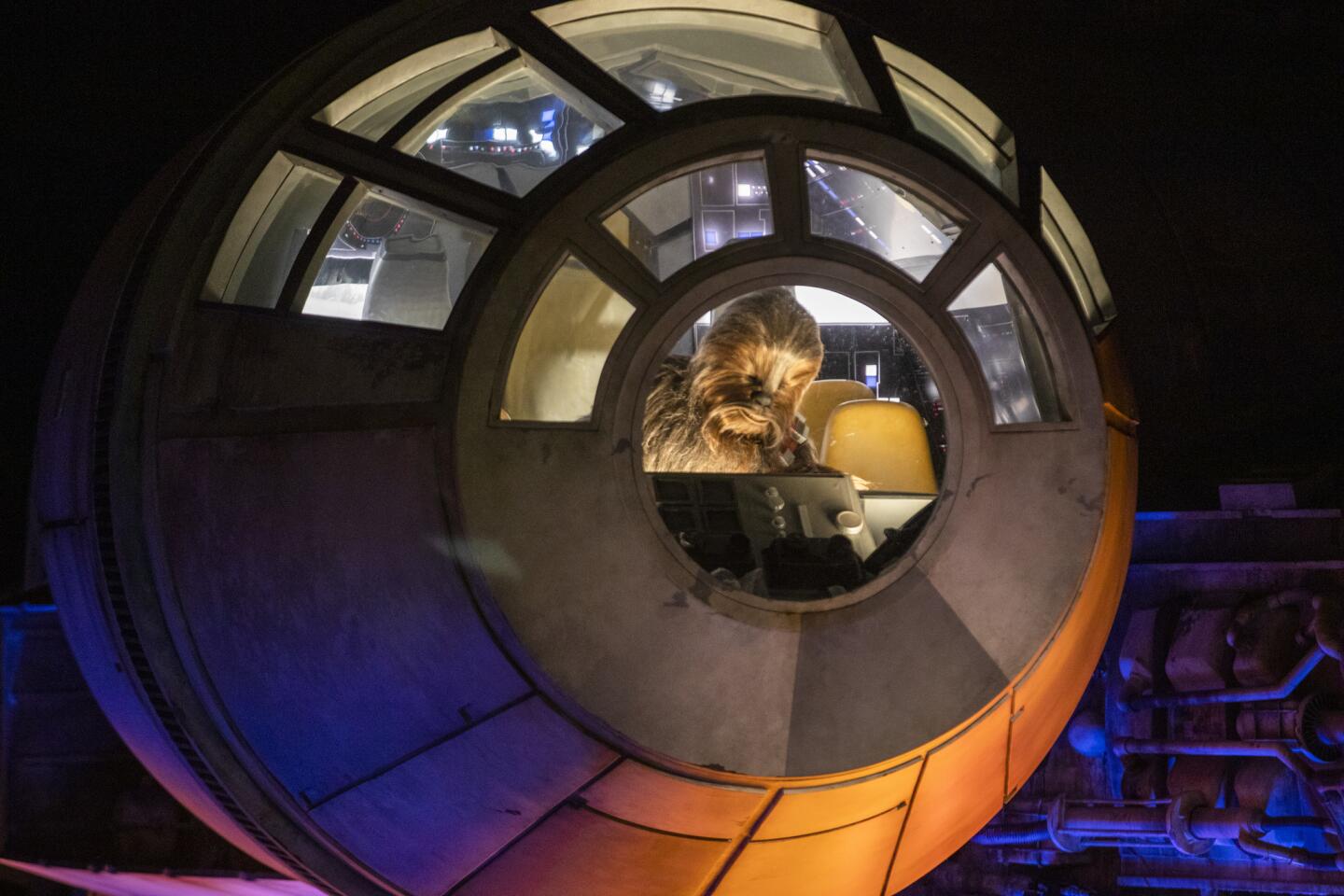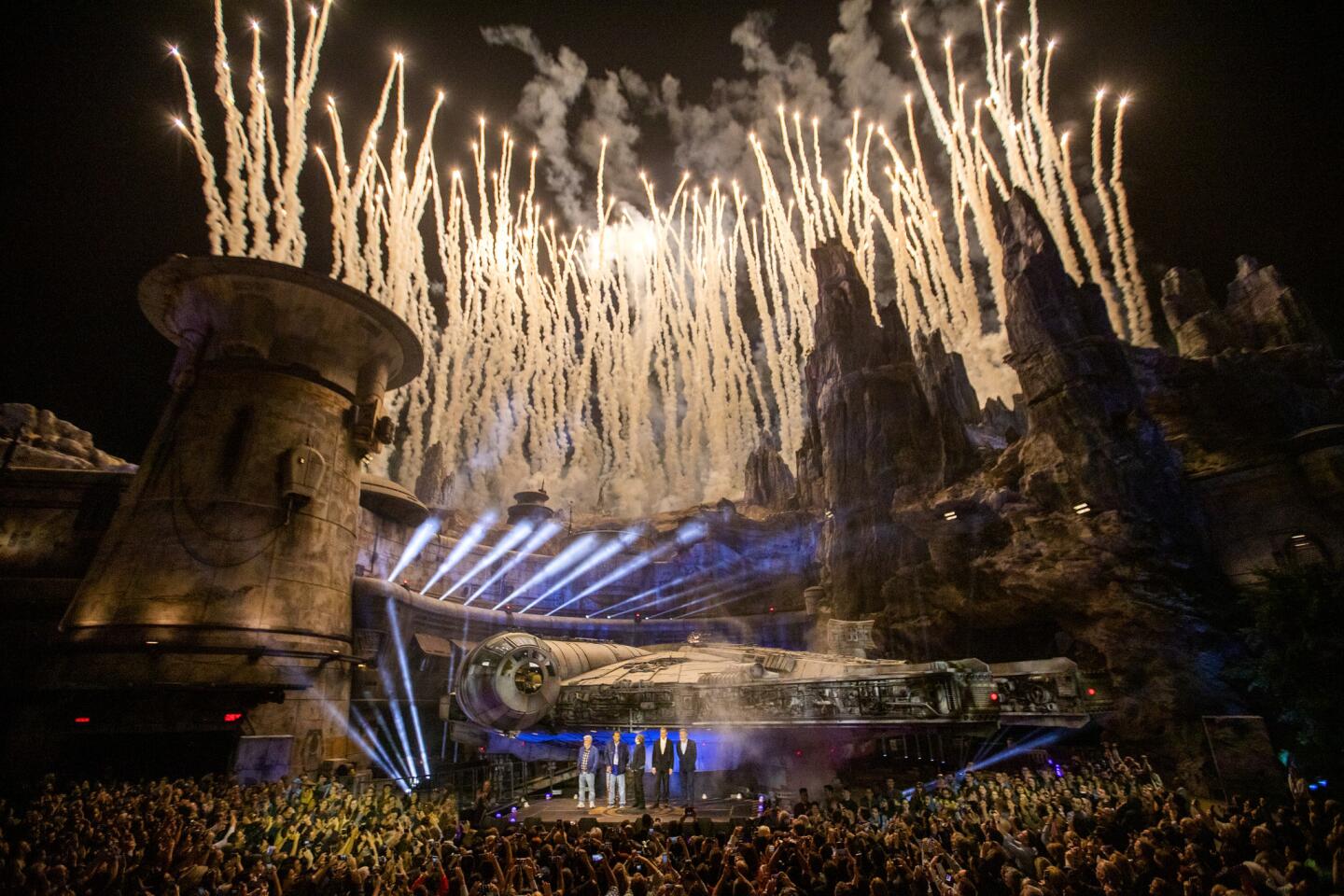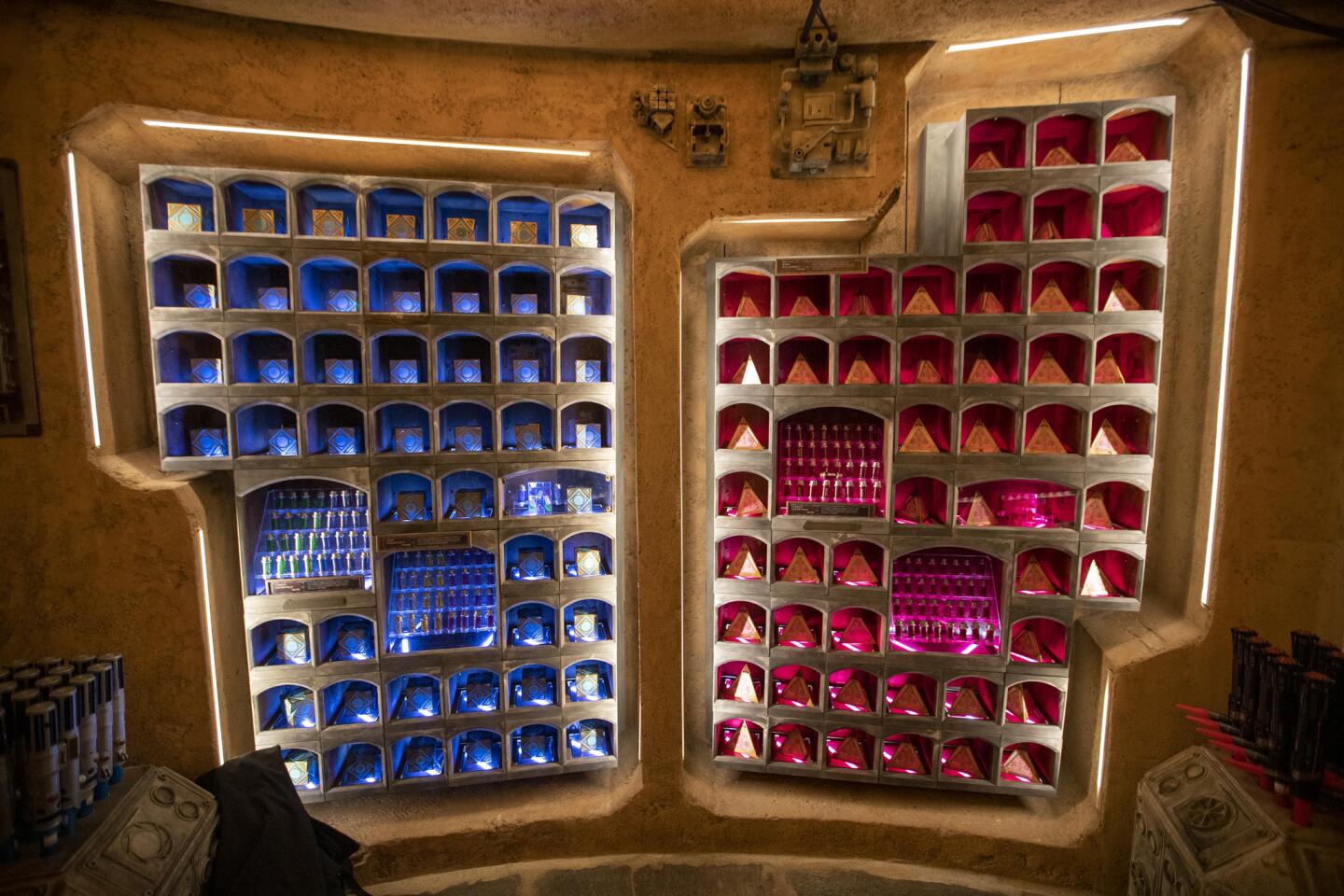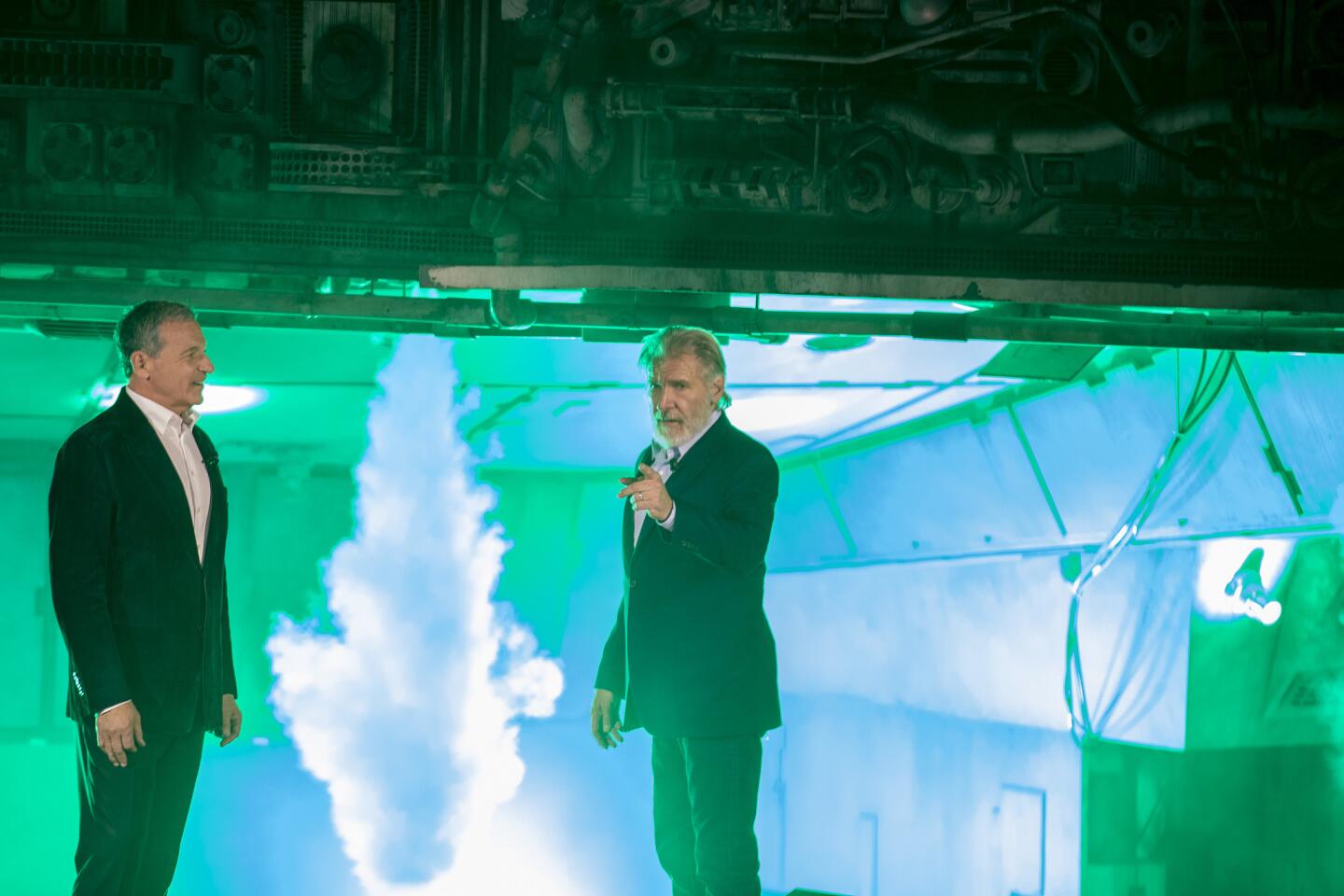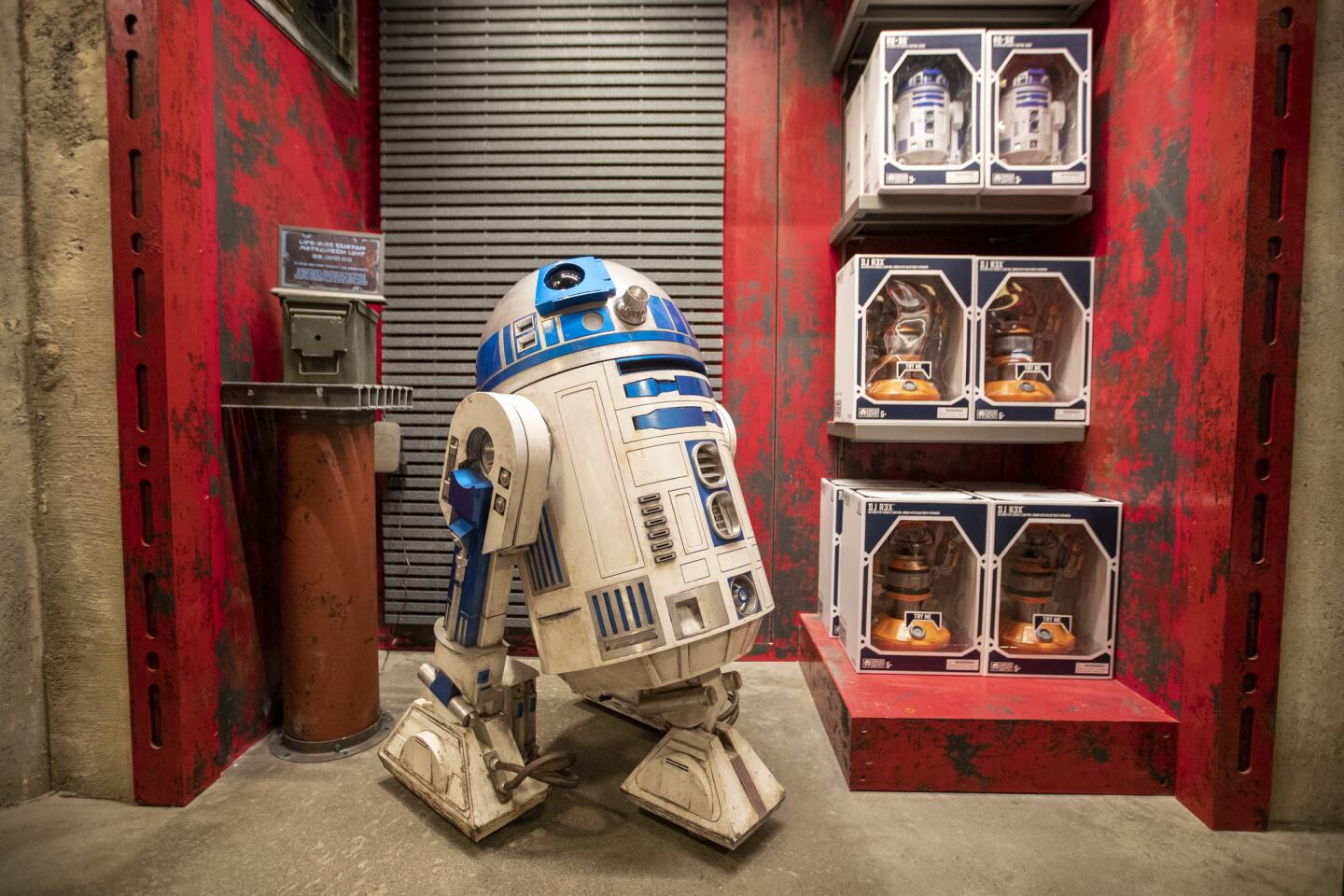Star Wars: Galaxy’s Edge needed a musical score. Cue John ‘Obi-wan’ Williams
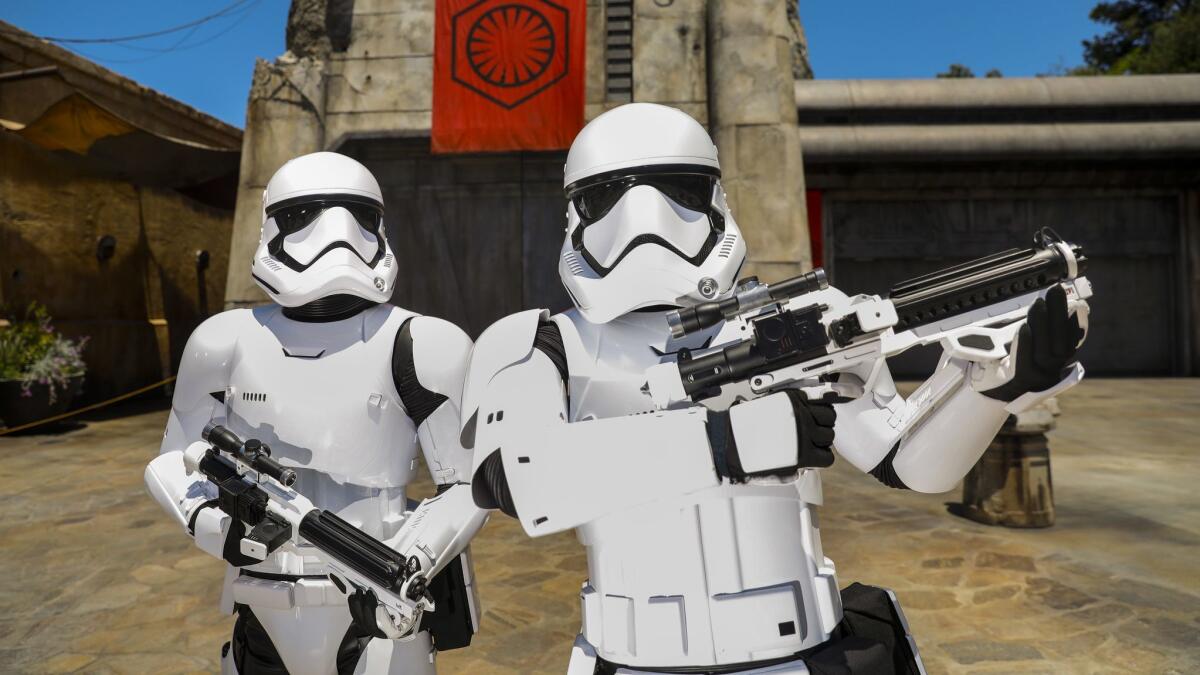
- Share via
Disneyland isn’t Disneyland without the music — from “When You Wish Upon a Star” wafting down Main Street, to George Bruns’ classic score haunting “Pirates of the Caribbean.” And “Star Wars” isn’t “Star Wars” without the celestial, swashbuckling music of John Williams.
So when it came to the 14-acre Star Wars: Galaxy’s Edge attraction at the edge of Walt Disney’s 63-year-old theme park, the land’s designers knew there was one phone call they had to make.
“We wanted to create something that was new and unique, but we wanted something that belonged in ‘Star Wars,’” said Matt Walker, head of music for Walt Disney Imagineering. “There is no other composer, as far as we were concerned, that could come in and create and truly support a sense of place.”
Williams — age 87, winner of five Oscars — needed to be convinced.
“There was a courtship period,” Walker admitted. “There was bringing him in, you know, looking at our initial models, animatics of what the attraction experiences were going to be like.”
Check out all of our Star Wars: Galaxy’s Edge coverage »
The composer’s first reaction: Isn’t there plenty of existing “Star Wars” music to choose from? Williams has indeed written more than 16 hours of music for the “Star Wars” universe between his eight — soon to be nine — feature films, an original theme for “Solo: A Star Wars Story” and gobs of concert suites.
But Williams, who declined to be interviewed for this story, has always assigned themes and leitmotifs to new characters and planets, argued John Dennis, executive creative director of music at Imagineering. “Cloud City has a theme,” Dennis said. “You wouldn’t go to Mos Eisley spaceport without hearing that theme. Those are the things we talked to John about, saying ... Batuu needs its own identity to give people the emotion that you gave them in all those great cinematic experiences.
“And there is no one else to do it,” Dennis continued dramatically. “John Williams, we need you — help me, Obi-wan!”
“I think John couldn’t resist the feeling of, well, that needs its own special musical theme,” said composer William Ross. “It didn’t have anything to do with money or legacy or anything. It was about: Oh, there’s some unfinished business there.”
Ross has been Williams’ “bullpen” ever since he adapted the veteran composer’s themes for the “Harry Potter and the Chamber of Secrets” score, and has assisted on Williams’ past two “Star Wars” film scores. One of Hollywood’s go-to orchestrators and arrangers, Ross speaks Williams’ unique musical language fluently, and has previously adapted the “Star Wars” canon for the Star Tours ride in Tomorrowland and the rethemed Hyperspace Mountain.
Disney simply asked Williams for a new theme. He went off and composed, in Walker’s words, “a five-minute symphonic tone poem” filled with brand-new themes and motifs. Ross recorded that suite with the London Symphony Orchestra, the original interpreters of “Star Wars” music, at Abbey Road Studios.
“The suite just fit the land perfectly,” said Ross. “It was mysterious and kind of haunting, but parts of it were powerful and noble.”
You wouldn’t go to Mos Eisley spaceport without hearing that theme. Those are the things we talked to John about, saying ... Batuu needs its own identity.
— John Dennis, Walt Disney Imagineering
Having received the equivalent of a lightsaber handmade by the Luke Skywalker of music, Imagineering then decided to wield music in a very nontraditional, non-Disneyland way in “Galaxy’s Edge” — which is to say, hardly at all.
“The last thing we wanted was to feel like you’re walking in and hearing, you know, any kind of music that was being pumped into the land as background,” said Walker.
Instead, the aural backdrop of the Black Spire Outpost on the planet of Batuu is the buzz of space bugs, radios tuned into pod-race broadcasts and X-wings flying overhead. In “Galaxy’s Edge,” music lives like it does in real life — faintly heard coming from apartments in the market, or piped into restaurants and restrooms.
Twenty-nine original songs were commissioned, a wild variety of intergalactic pop and “otherworldly” world music. Williams himself established a kind of template for this strain of in-world “source” music with his bizarro Benny Goodman number for the Mos Eisley Cantina in the original “Star Wars,” up through the steel-pan dance music in the Canto Bight casino in “The Last Jedi.”
“We took several types of world music, like a Chinese erhu, and mixed it with African drums, and on top of that put something Middle Eastern, and then even after that we would filter it and reverse it, and just make it sound completely otherworldly,” said Yaron Spiwak, senior music producer at Imagineering.
These songs play on radios throughout the land — and in Oga’s Cantina, where the clumsy droid Rex acts as DJ.
The task was essentially inventing a new music, said Spiwak. “Some of the aliens have like 20 fingers, or some of them have weird embouchures or mouths, so obviously they would play instruments differently than we do. It was kind of fun to imagine how that would sound.”
The classic Williams “Star Wars” sound is primarily heard in three places: Savi’s Workshop, where parkgoers build their own lightsaber in a bit of interactive theater, and the land’s two rides. Rise of the Resistance, which opens later this year, is a spaceflight battle attraction inside a Star Destroyer. Millennium Falcon: Smugglers Run opened with the land, and has guests ride an interactive flight simulator in the famous cockpit.
Both scores operate more like the music in a video game, with a complex web of variables and trigger points. Ross took the arsenal of Williams’ themes, both new and old, and created music that can change on a dime and go down a vast range of choose-your-own-adventure paths.
“A lot of thought goes into figuring out how to make it feel seamless,” Ross said.
For Savi’s Workshop, Ross created another, more linear score using a lot of classic “Star Wars” themes that help transform the common Disneyland visitor — sweating from the California heat, and out at least $150 for a ticket and $25 for parking — into an ersatz Jedi Knight or Sith Lord. Whereas the ride scores traffic in the universe’s battle music, here the more ruminative, spiritual strains of the Force theme and Yoda’s theme sweep guests up into the ancient, cosmic drama.
The power of John Williams, along with the comforting voice of Frank Oz as Yoda, is such that grown men lifting their blades — which just set them back $200 — have been seen wiping away tears of joy.
More to Read
The biggest entertainment stories
Get our big stories about Hollywood, film, television, music, arts, culture and more right in your inbox as soon as they publish.
You may occasionally receive promotional content from the Los Angeles Times.
